A classic-style living room pays homage to tradition and offers a timeless interior design. This design trend is immune to fleeting fashion whims, thus always remaining relevant. It conveys confidence and success to onlookers, while providing comfort and a sense of stability to homeowners, as nothing is more reliable and enduring than time-honored classics. This article discusses how to correctly apply the style’s canons to the main room in the house.
General Principles
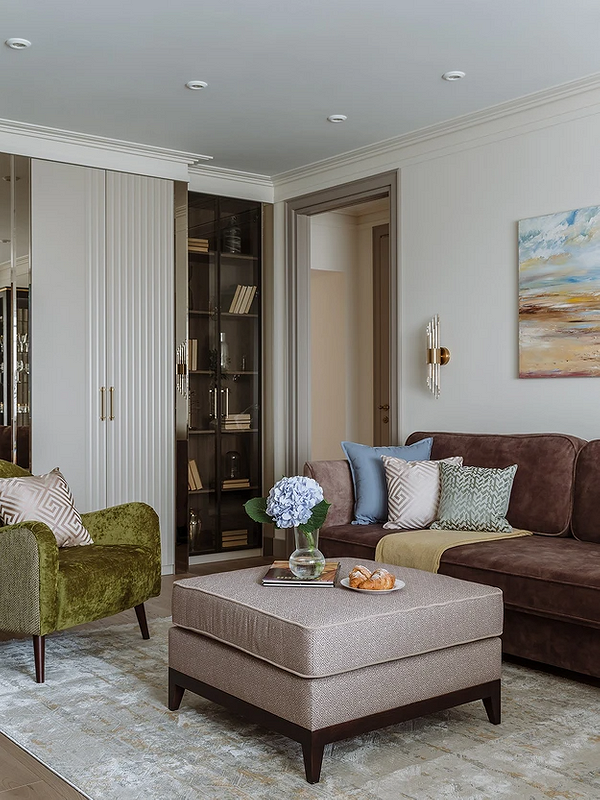
Such interiors typically require large spaces. Massive chandeliers, antique furniture, and elaborate moldings can overwhelm small rooms, hence a different design direction is preferable for them. Another important requirement is large windows. They need not extend from floor to ceiling but should allow ample light.
The main principles of a classic living room include:
- Smoothness and proportionality. The room’s decor features straight lines, neat curves, and symmetry: no zigzags, sharp angles, or broken curves.
- Design centered around a focal point. The classic living room design revolves around a main accent, such as a fireplace, a carved wooden cabinet, a luxurious sofa, or anything else you’d like to draw your guests’ attention to.
- Exquisite decor. This is one of the few contemporary styles that embraces pompous and ceremonial decoration. This includes ornate moldings and elegantly designed cornices, multi-tiered crystal chandeliers for lighting, and art pieces (paintings, sculptures, vases), large mirrors, and accessories primarily for decorative rather than functional purposes.
- Bright, neutral colors. The classic palette is extremely restrained and unobtrusive, encompassing all achromatic colors (white, gray, and – in small quantities – black), beige, and pastel shades. Neon, loud colors are prohibited, as are harsh contrasts.
- Expensive finishing materials. These may include natural stone, precious wood, Venetian plaster, and for upholstered furniture – silk, satin, and tapestries. Accessories made of precious metals and abundant gilding are welcome. Cheap synthetics, as well as plastic and ordinary glass, are completely excluded.
Tip:
Since urban apartments are often too cramped for classical style, an original solution is to combine the kitchen with one of the rooms, thus creating a spacious area with lots of windows. Such a combined kitchen-living room in classic style allows full realization of design ideas. However, it’s important to consider that kitchen cabinets and appliances must also meet the style’s requirements.
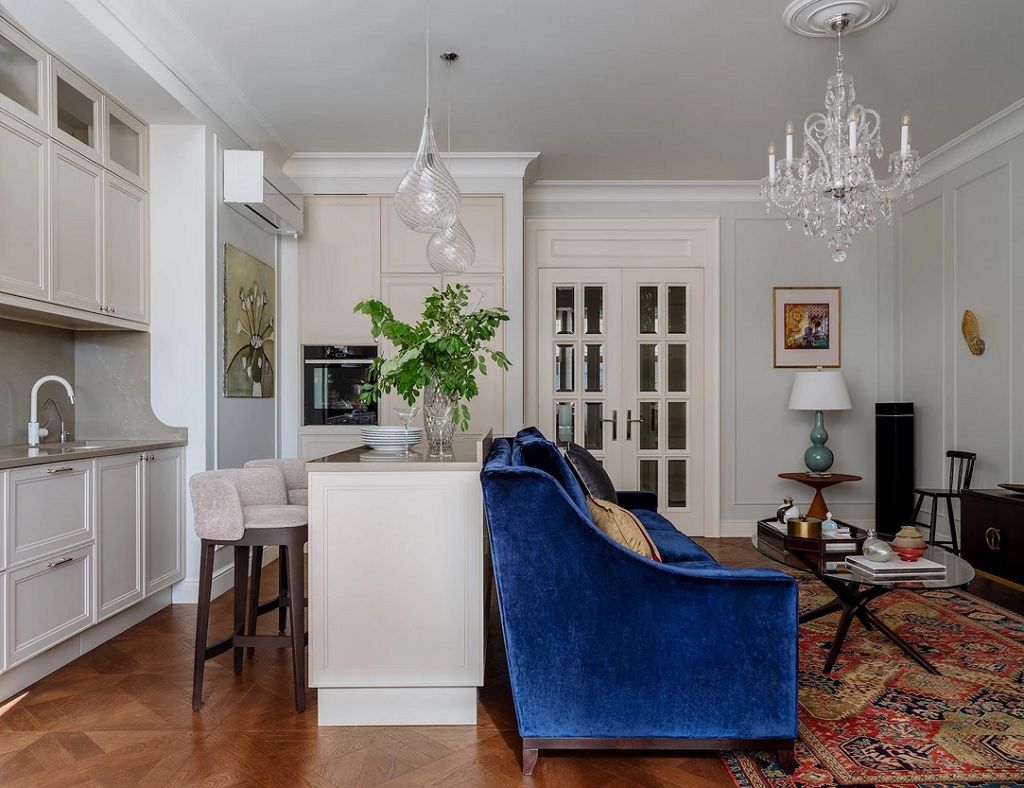
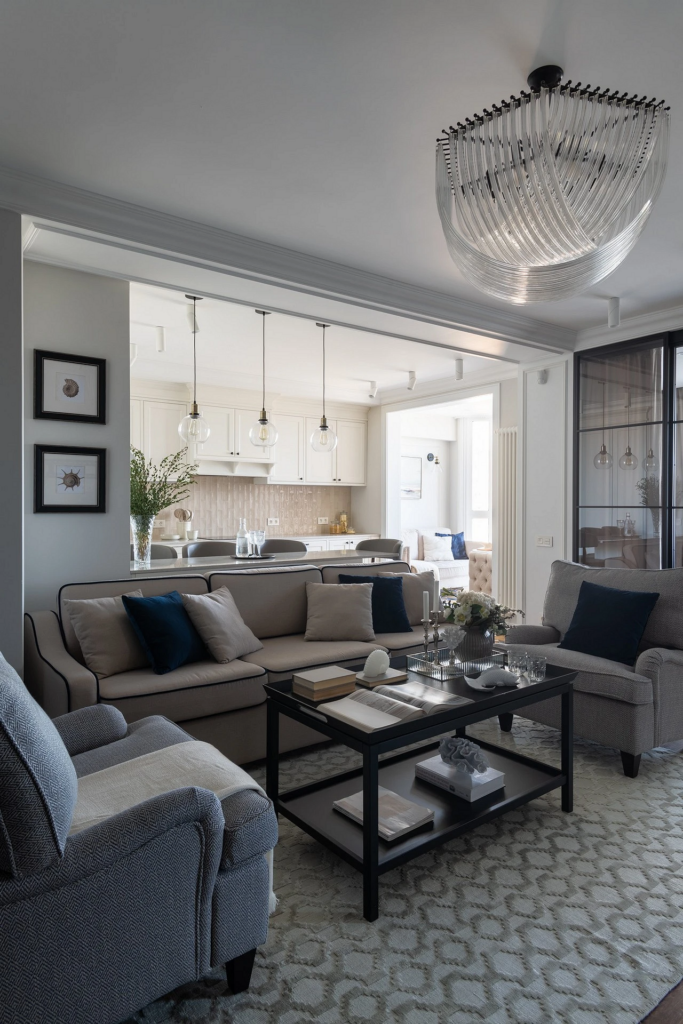



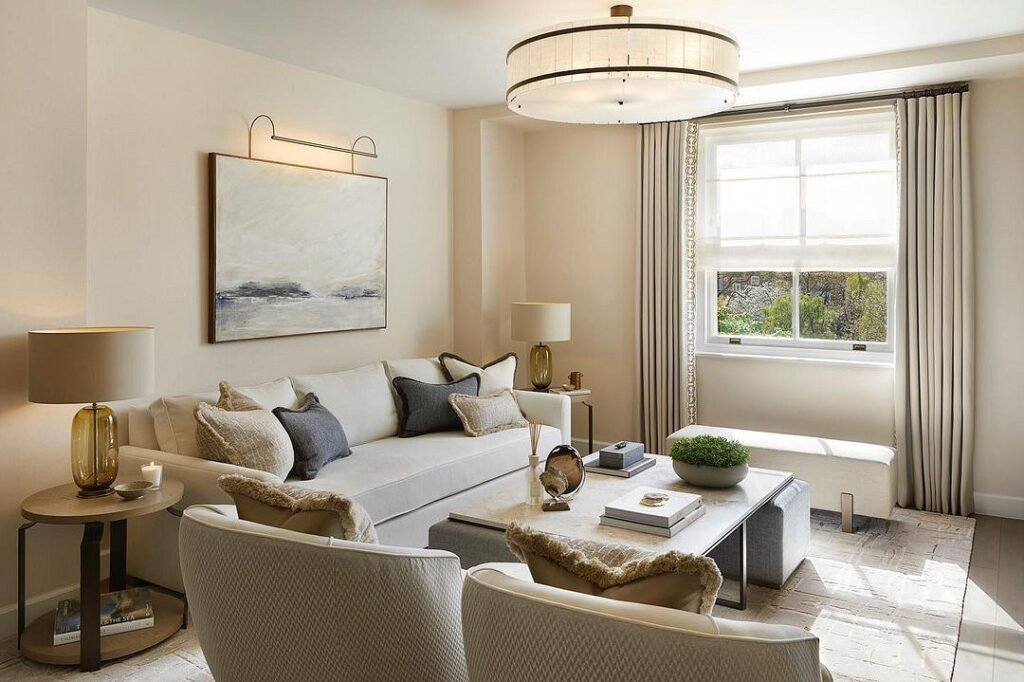
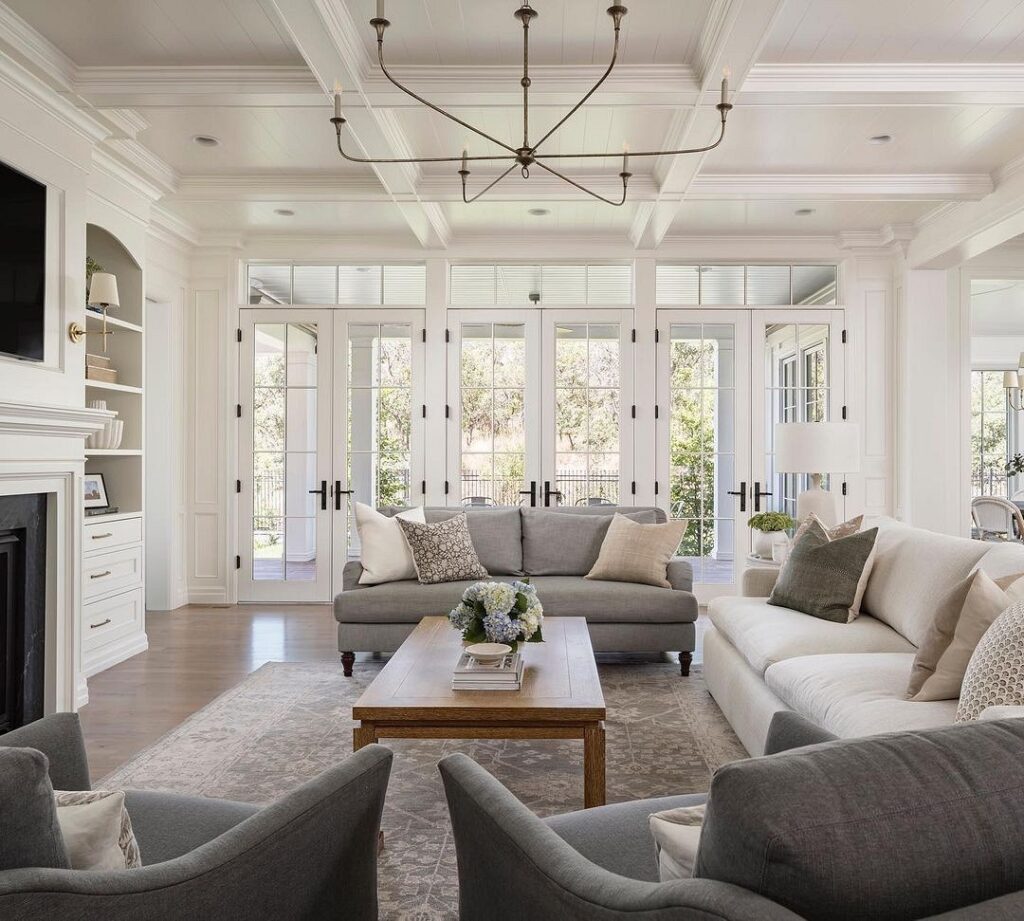

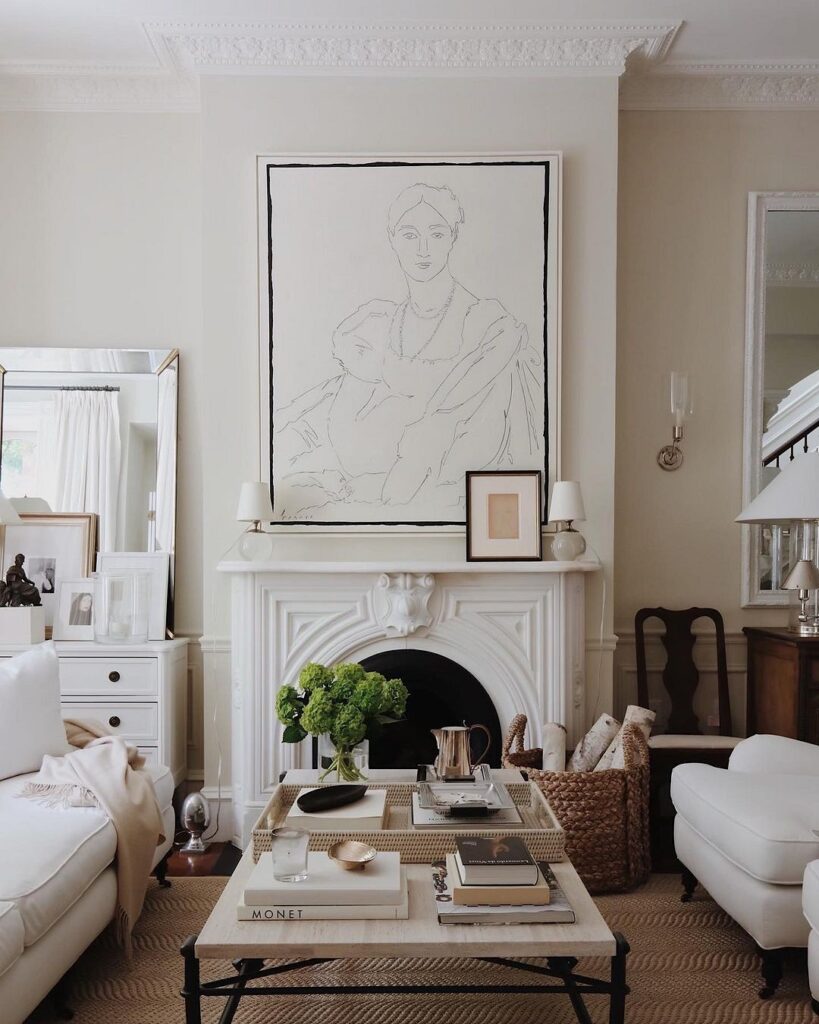
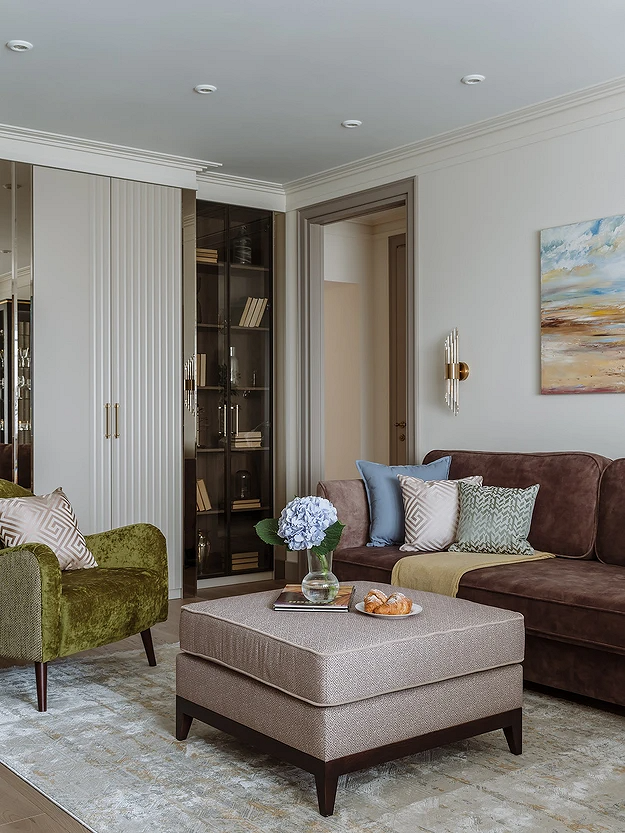
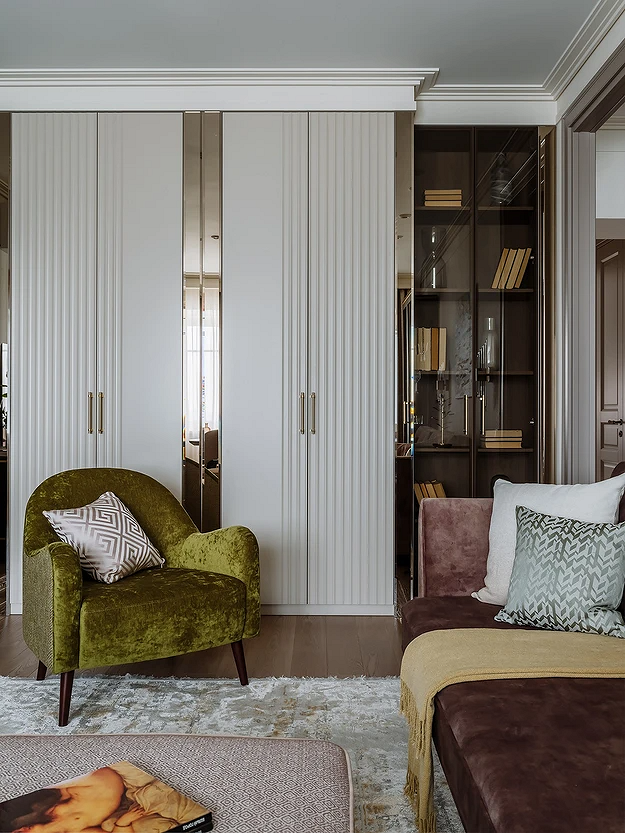
Color Palette
In nearly every photo of a classic living room, the interior adheres to light and subdued shades.
Dark gray, chocolate, or black are rarely used (only permissible in very large halls), while extravagant or even just bright colors are completely excluded.
Main colors suitable for classic style:
- White, lending the room a sense of strictness and nobility.
- Beige, creating coziness and comfort.
In addition to or instead of beige, light blue or light gray is sometimes used. If a saturated accent is chosen (like a piece of furniture or a decor item), the colors are noble and dignified: purple, cobalt, emerald, ocean blue, etc.
Avoid contrasts: color transitions should be soft and gradient. Often, the entire space is designed in one palette, using its different shades. Furnishings and various decor details (picture frames, lamp bases, etc.) are often gilded.
A bright, classic living room looks light and festive. It’s filled with air and volume, even if it’s not very large. This is another reason to use such shades – they visually enlarge the room.



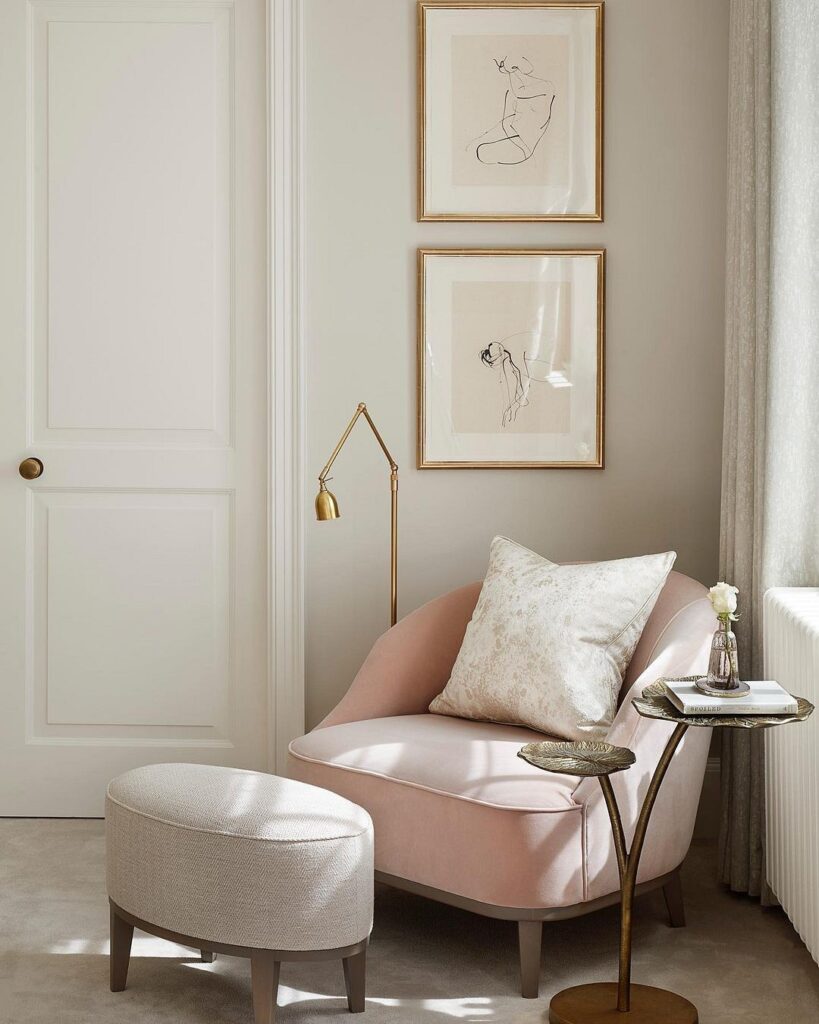

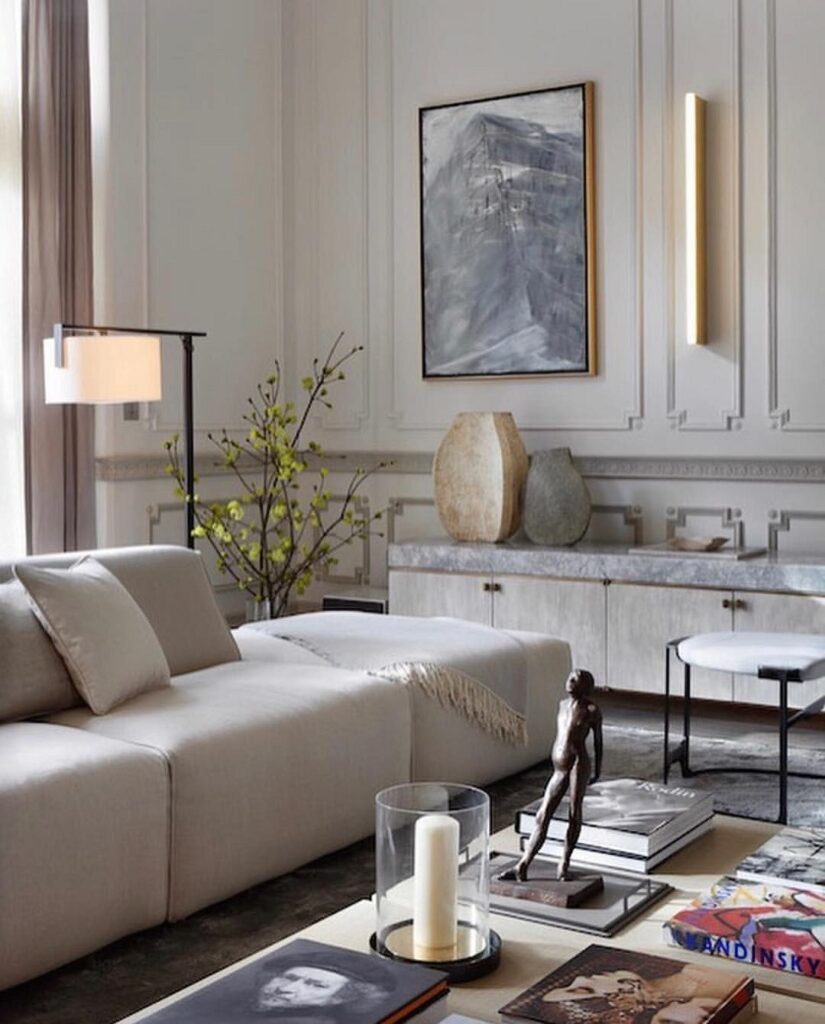
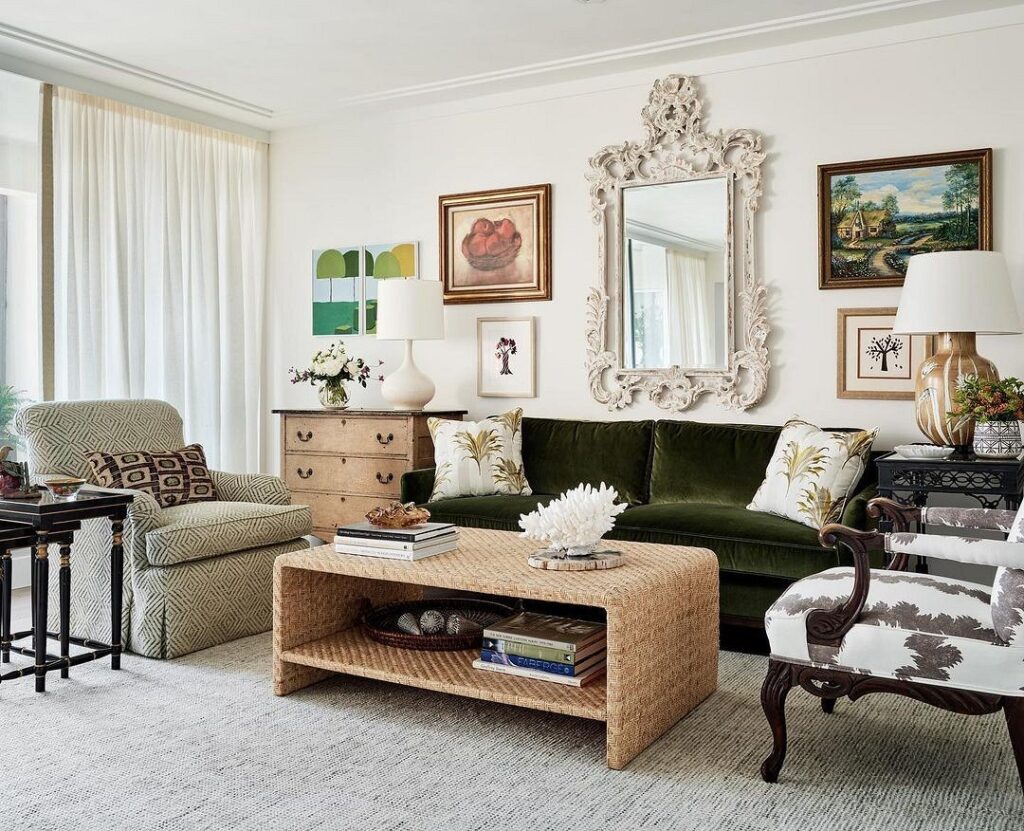
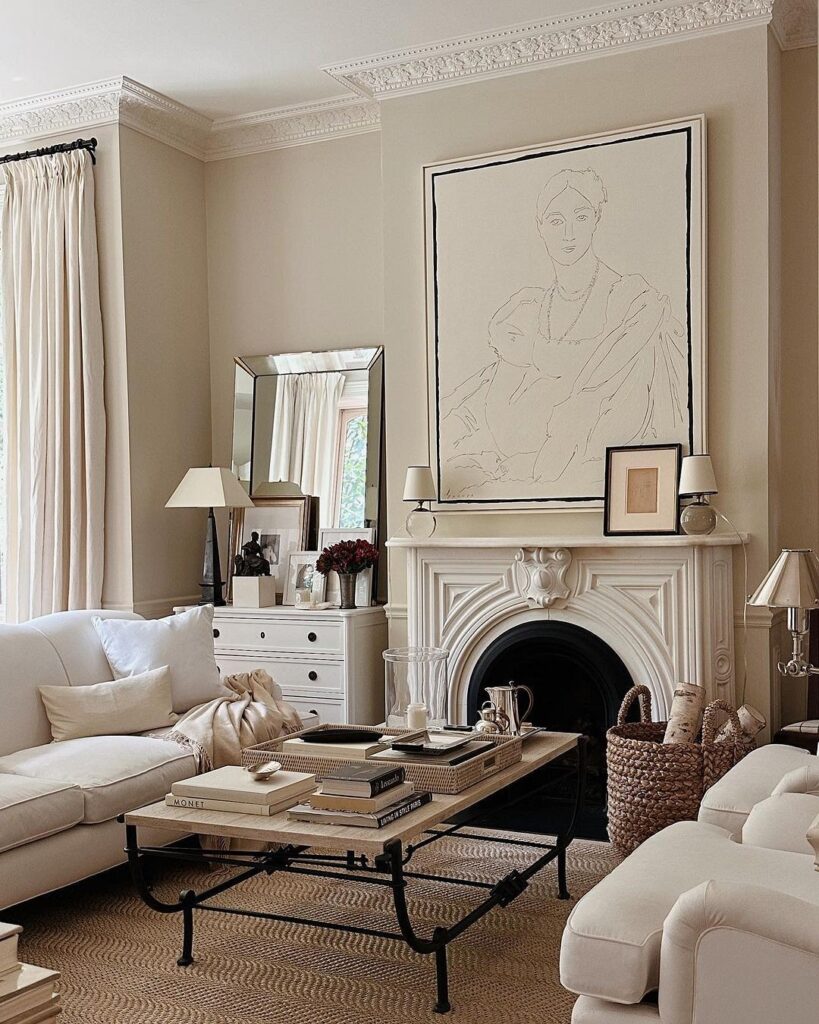
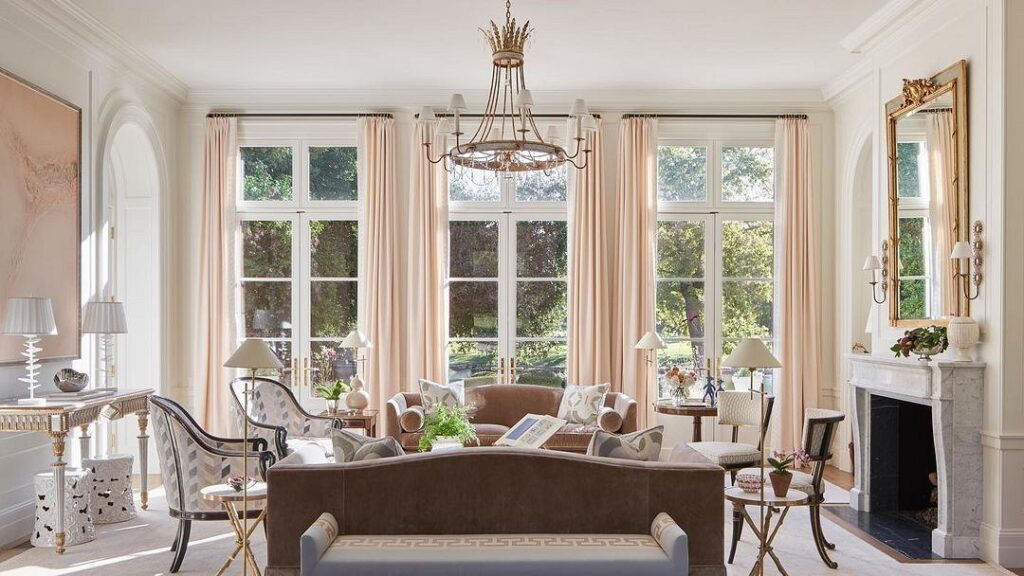
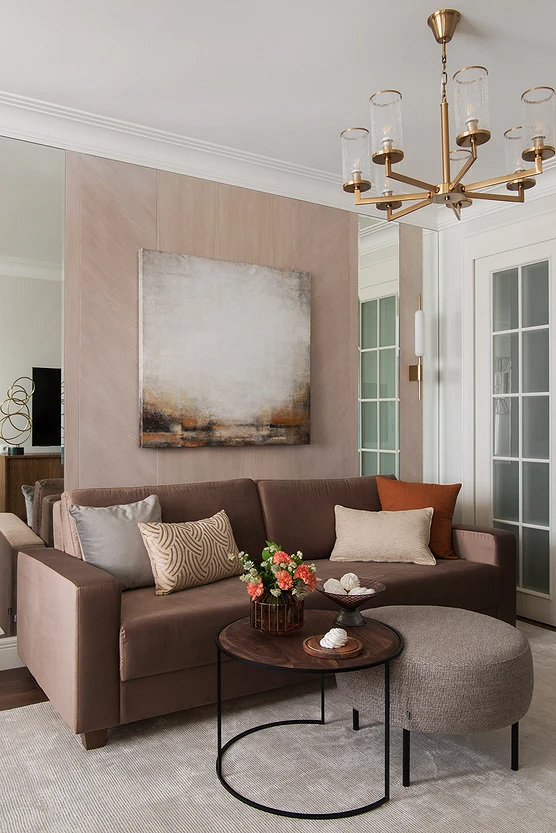
How to Design a Classic Style Living Room Interior
Let’s explore how to plan a living room design in classic style, with photos of current interiors.
Finishes

For finishing a traditional interior, high-quality materials are chosen to last for decades.
- The ceiling is kept dazzlingly white. It can be decorated with elegant moldings or made multi-level. A stretch ceiling is permissible, but it must be matte (or satin) and without patterns or photo printing.
- Parquet is often laid on the floor. Ordinary wooden floors and, even more so, laminate, will undermine all efforts to create a flawless interior. If parquet is not suitable for some reason, it can be replaced with tiles or porcelain stoneware.
- The best choice for walls in a country house is Venetian plaster. Living rooms in apartments in classic style can be wallpapered, but not with simple paper, rather with non-woven or vinyl wallpaper with a relief pattern. A decorative cornice can be installed under the ceiling, and if the room size allows, the walls can be adorned with faux columns. For a more modern version of classic style, paint is suitable.

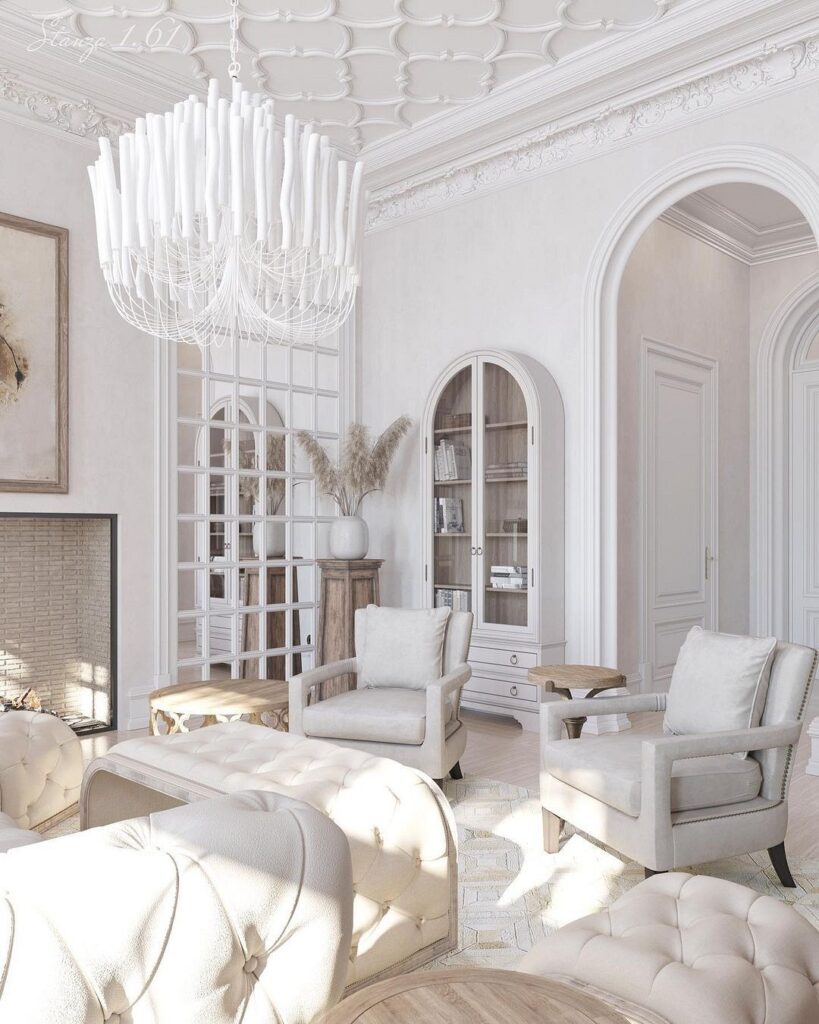
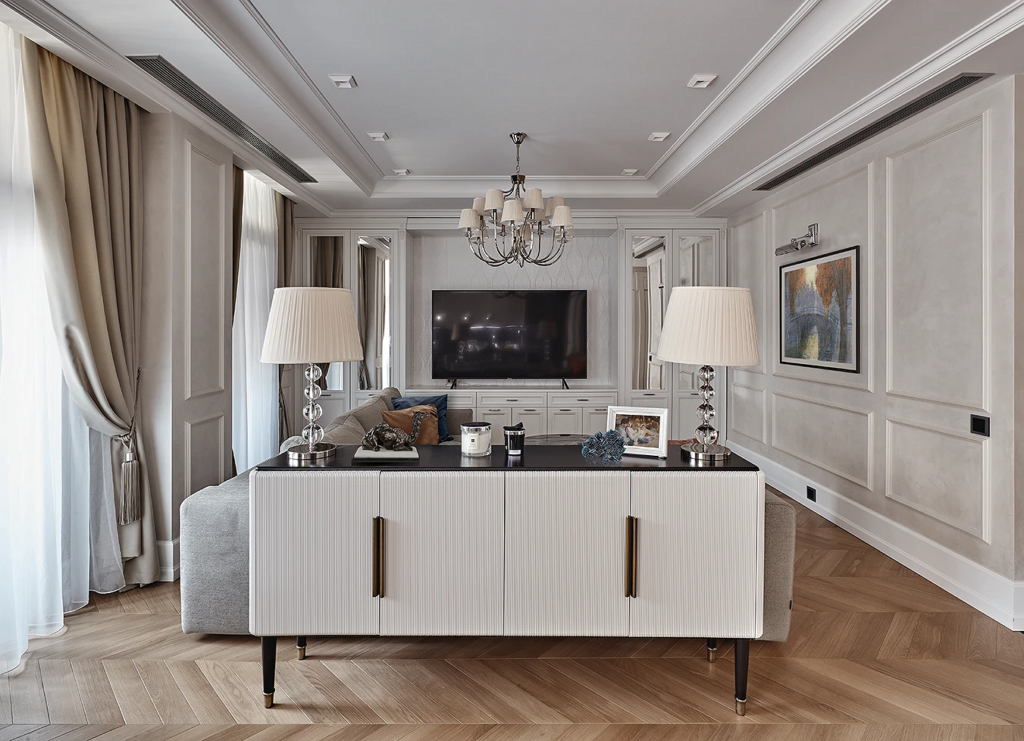
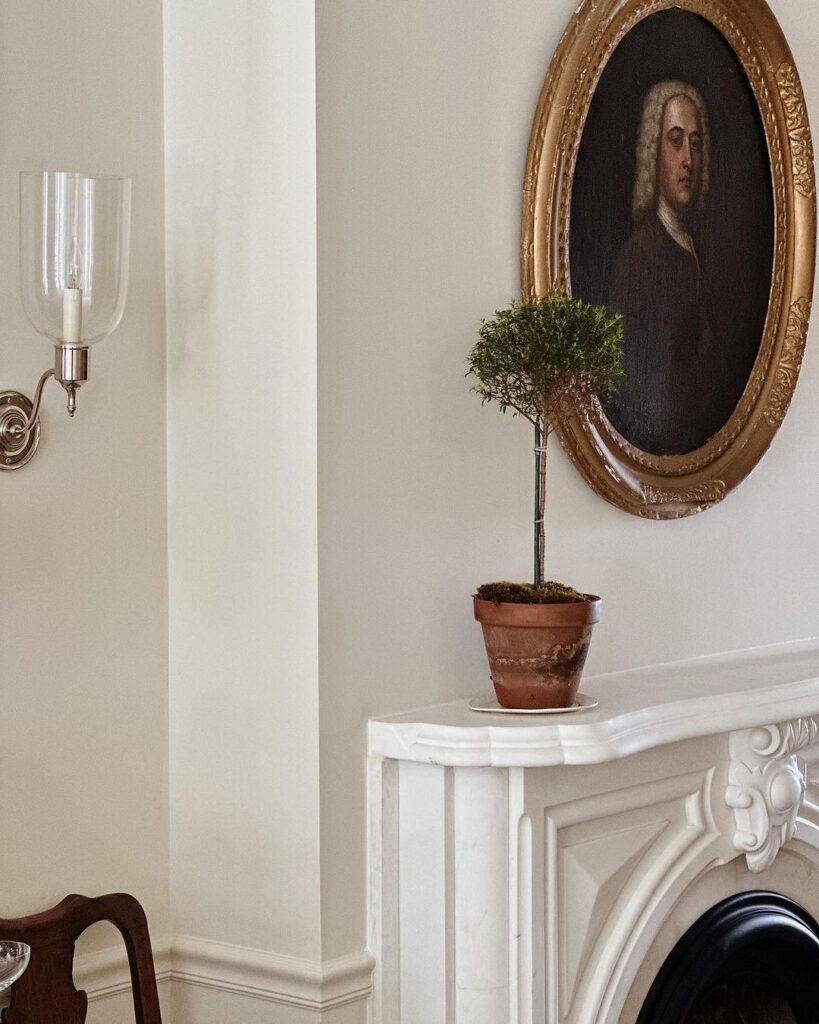
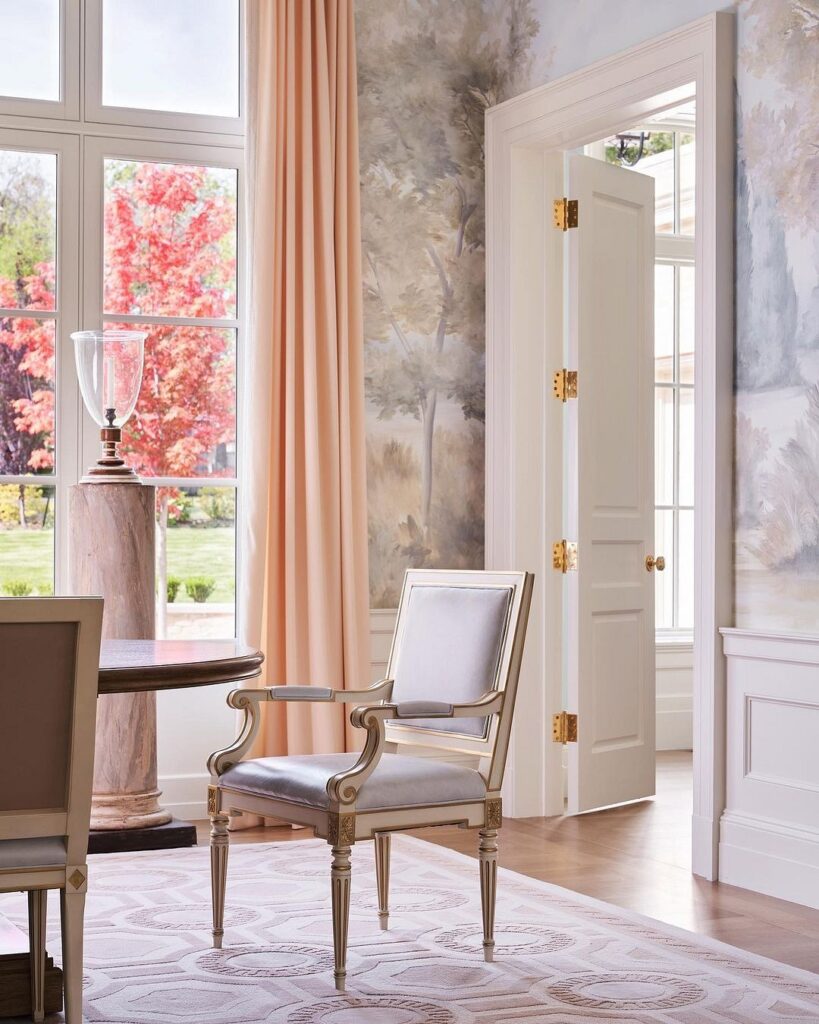
Furniture
Since the finishing serves as a neutral background, the selection of furniture for the living room in classic style must be particularly discerning.
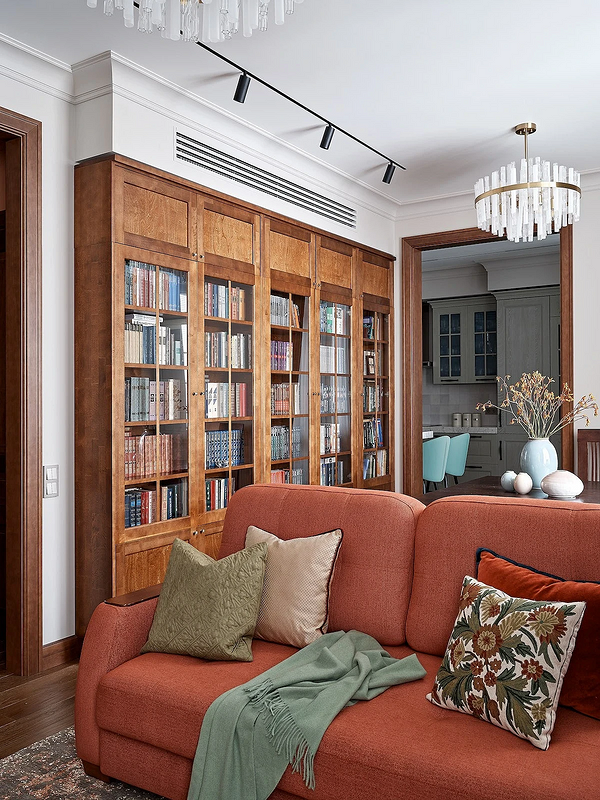
Again, a categorical “no” to cheap items. Sofas, armchairs, and poufs should be broad, solid, upholstered in expensive fabric or leather, and complemented with soft cushions. Cabinets, tables, chairs, and shelves must be made of natural wood, coated with varnish. At the very least, veneered.
A living room wall unit in classic style can be not only wooden but also white or light beige (bone, cream, etc.). The same applies to other cabinet furniture. Painting in other colors is considered in bad taste. Glass is permissible only as inserts, while fully glass items, as well as metal and especially polymer ones, are completely unsuitable.
To fully adhere to the nuances of the style, buy upholstered furniture with curved lines and intricate patterns on the wooden parts. If you prefer a simplified version of classic style, you can choose concise models without decoration. The main requirement is the absence of fanciness and extravagance. The upholstery shade should either match the walls or be slightly darker.
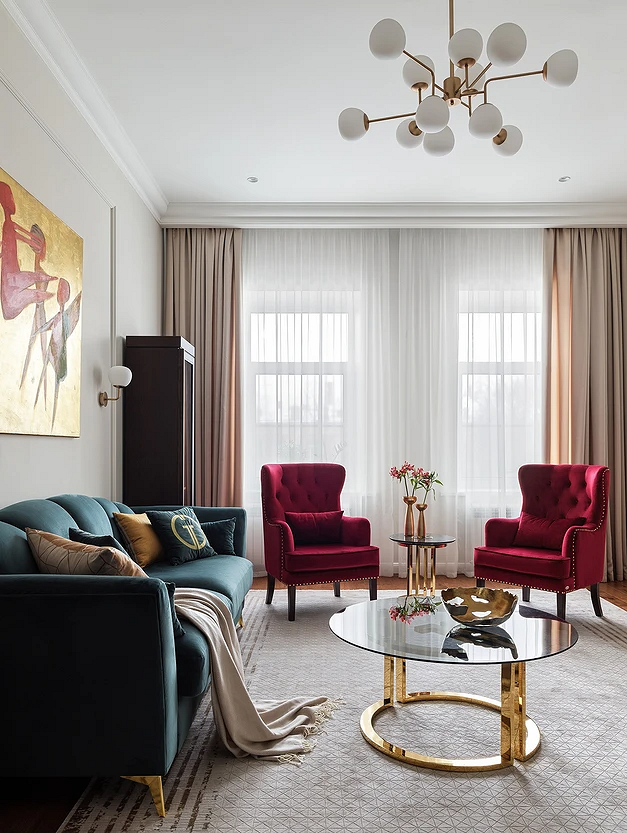
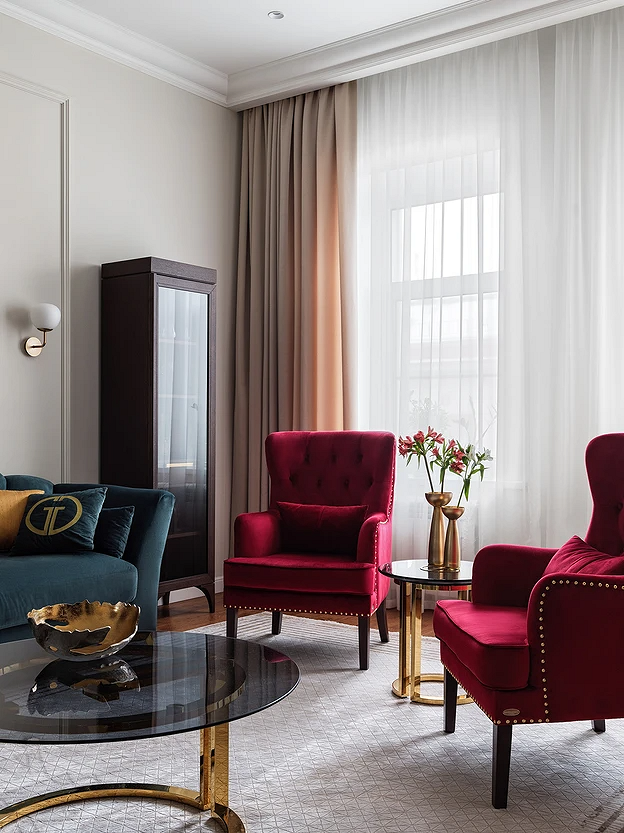

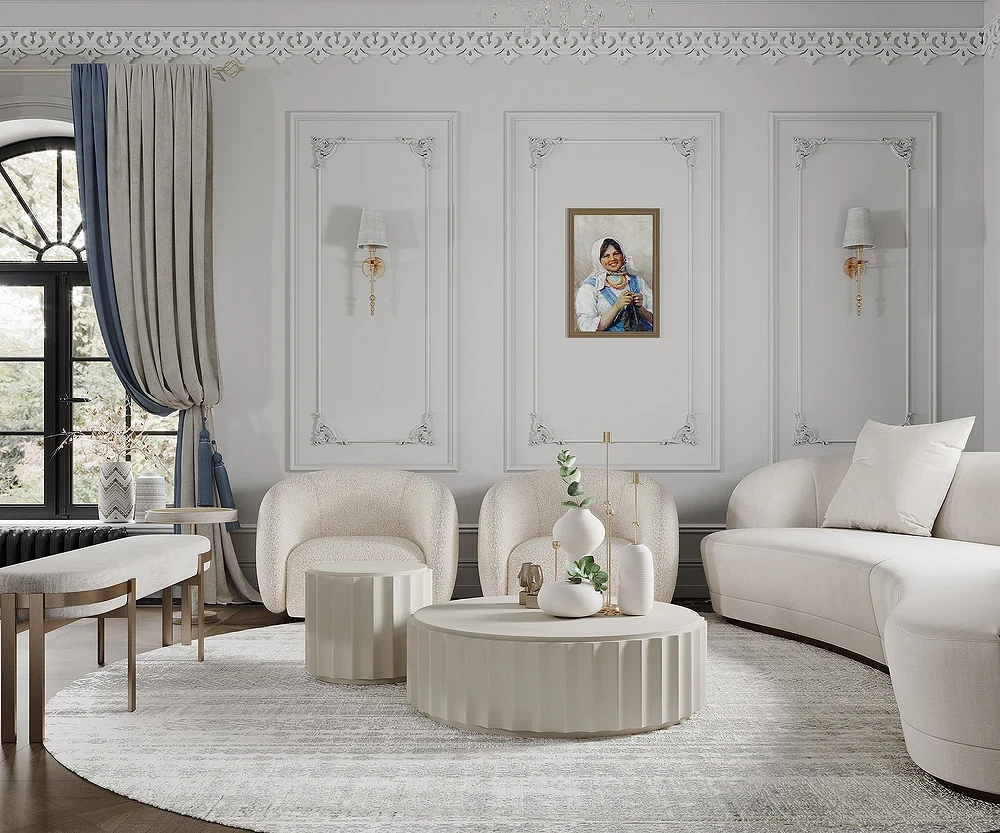
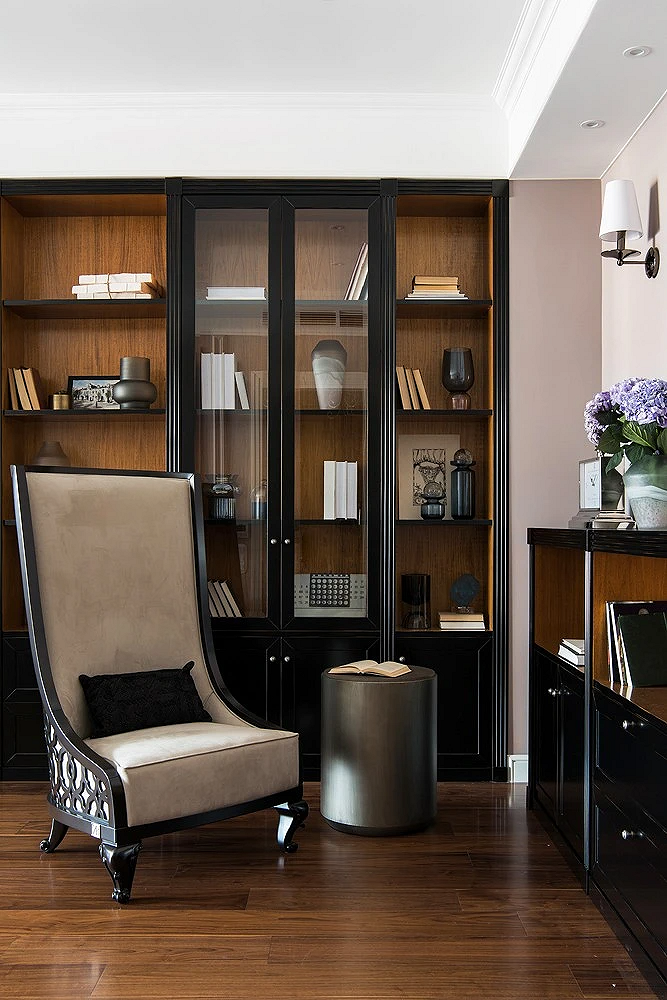
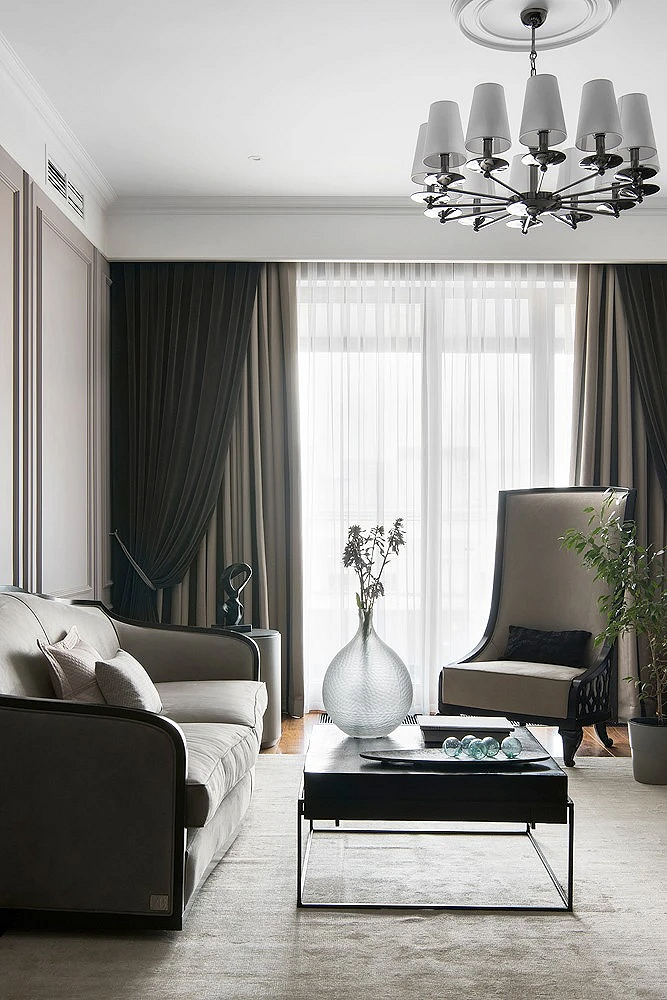
In a classic style living room, the choice of a cabinet should align with the room’s character, as its size makes it immediately eye-catching. If the room is decorated respectably and imposingly, then this piece of furniture should be flawless, ideally antique. For a more restrained setting, modern models are suitable provided they have an ‘antique’ look and are made of expensive wood.
Such a cabinet should not have solid doors: part or all of them should include glass inserts or leave the shelves open. If space is limited, an elegant chest of drawers, a shelving unit, or a display cabinet for collectibles can replace this piece of furniture.
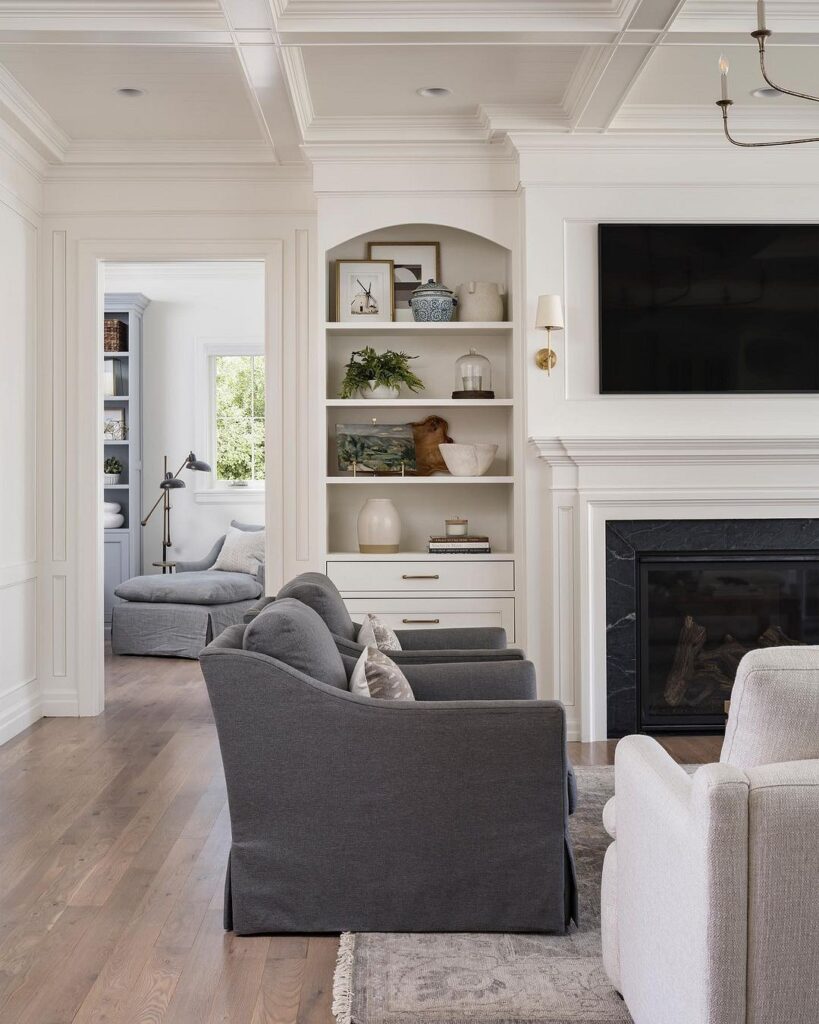
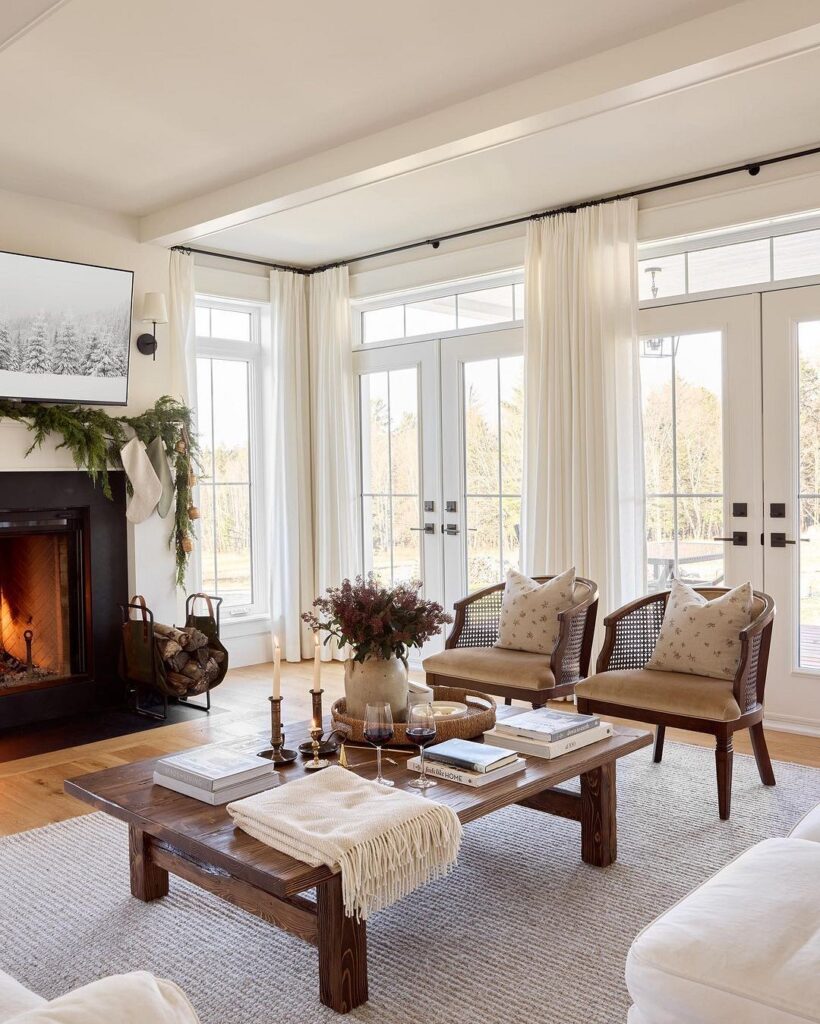
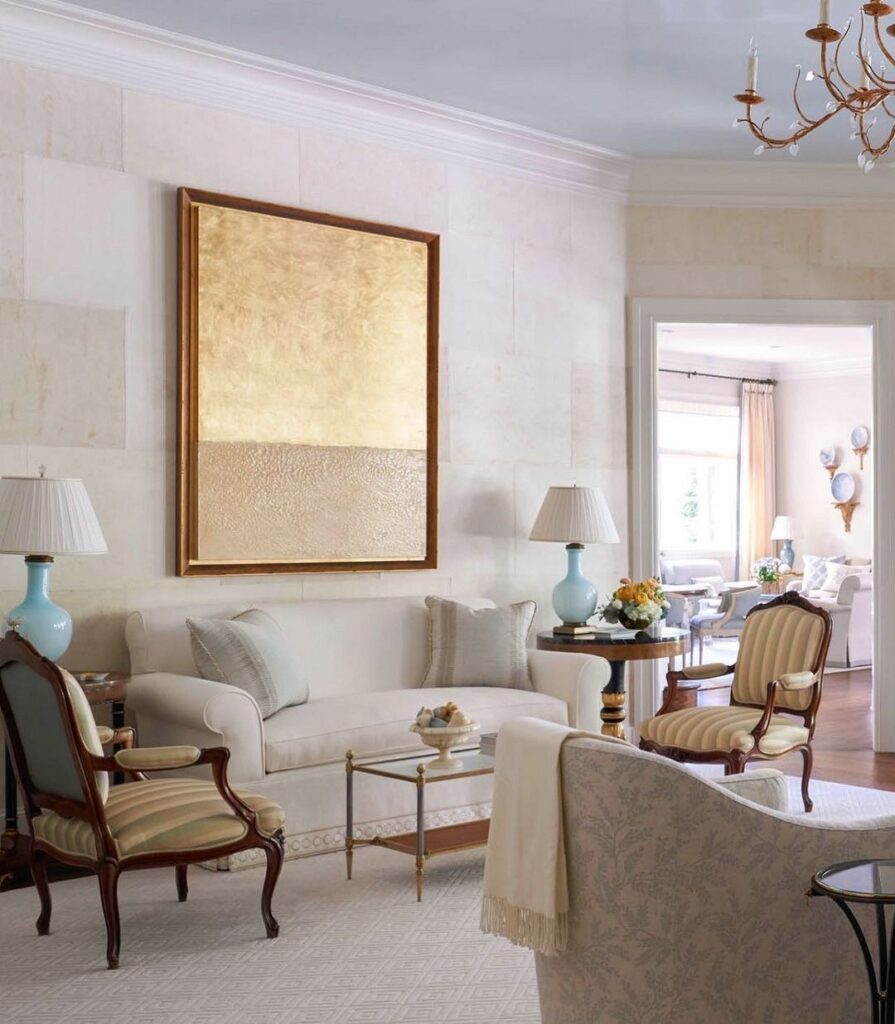
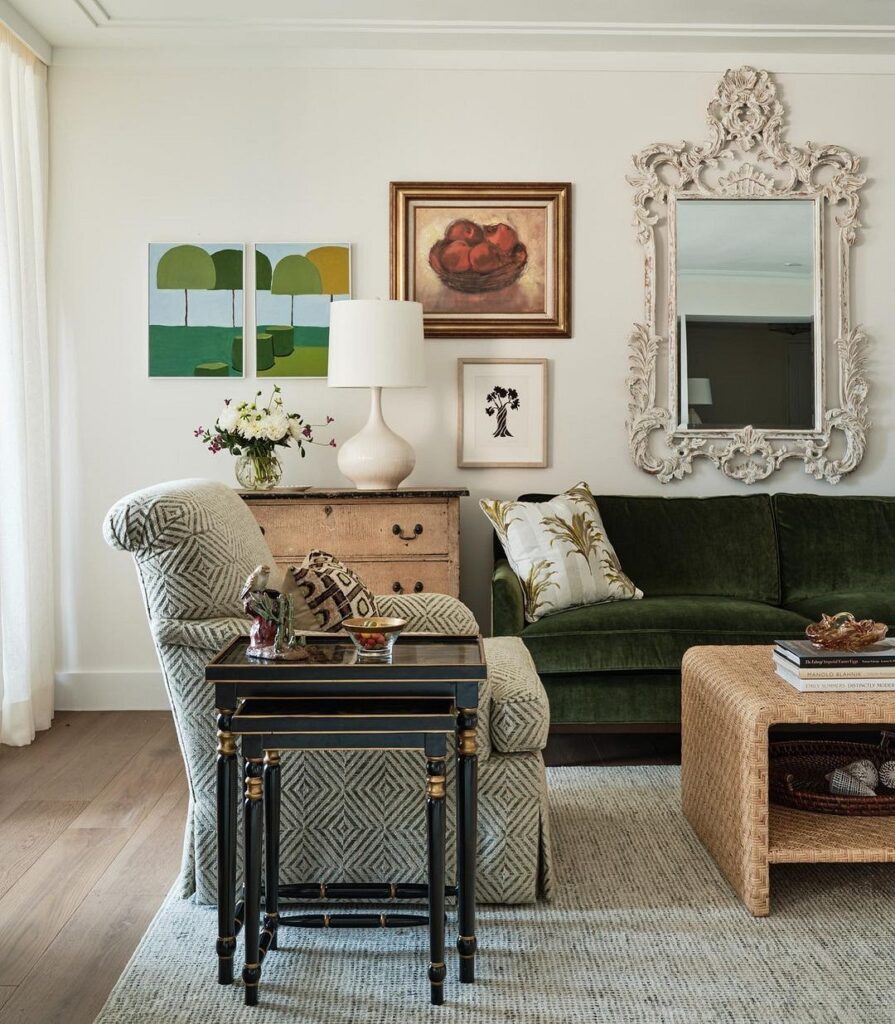
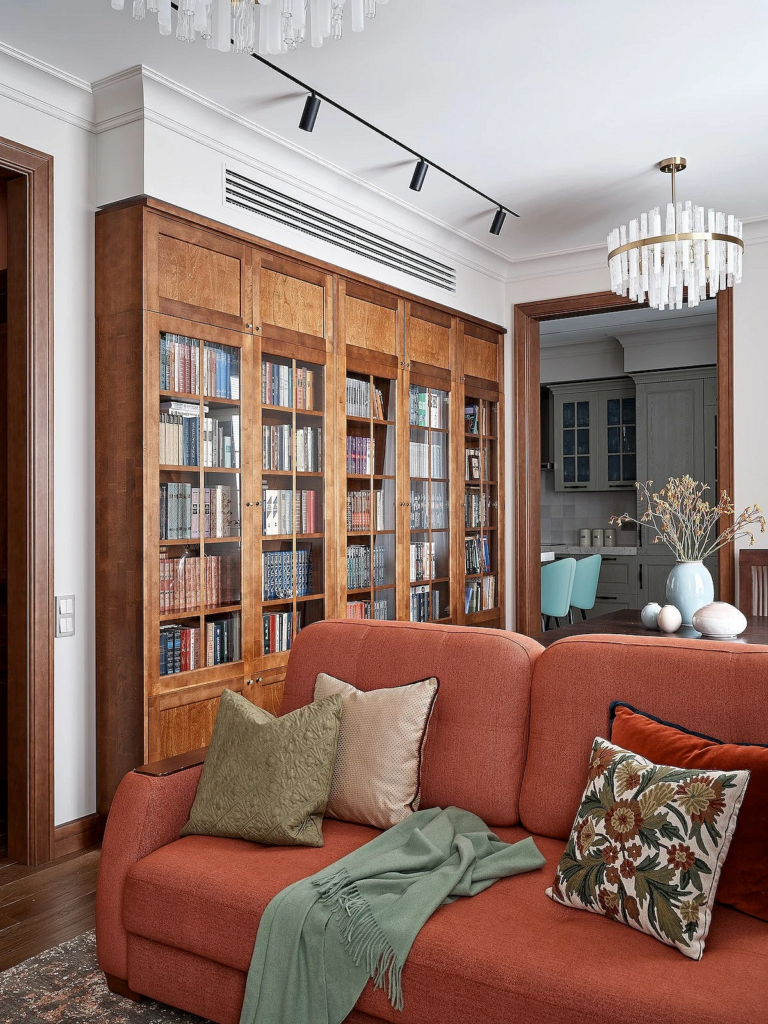
Textiles
Choose a rectangular or round rug. Ideally, it should be made of natural wool and handcrafted. The design is typically geometric, usually featuring a repeating pattern in subdued colors.
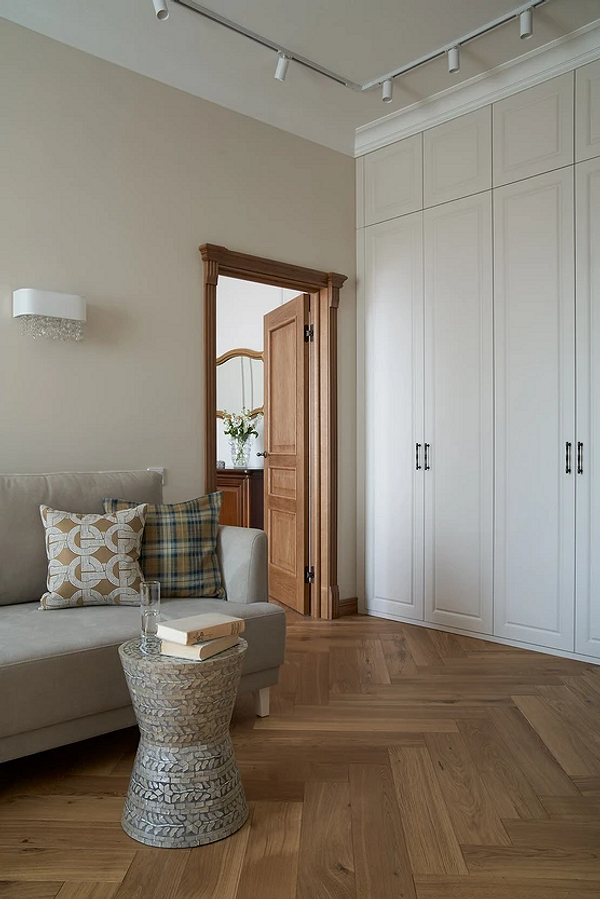
Furniture is arranged either at a small distance or so that only the front legs stand on the rug.
Curtains in a classic style living room should be fabric verticals: no blinds, Roman shades, or roller shades. It is customary to combine three types of draperies: dense opaque, light tulle, and lambrequins for decoration. The traditional choice is straight panels, but if you do not plan to draw curtains in the evenings, fixed imperial draperies can complement the setting.
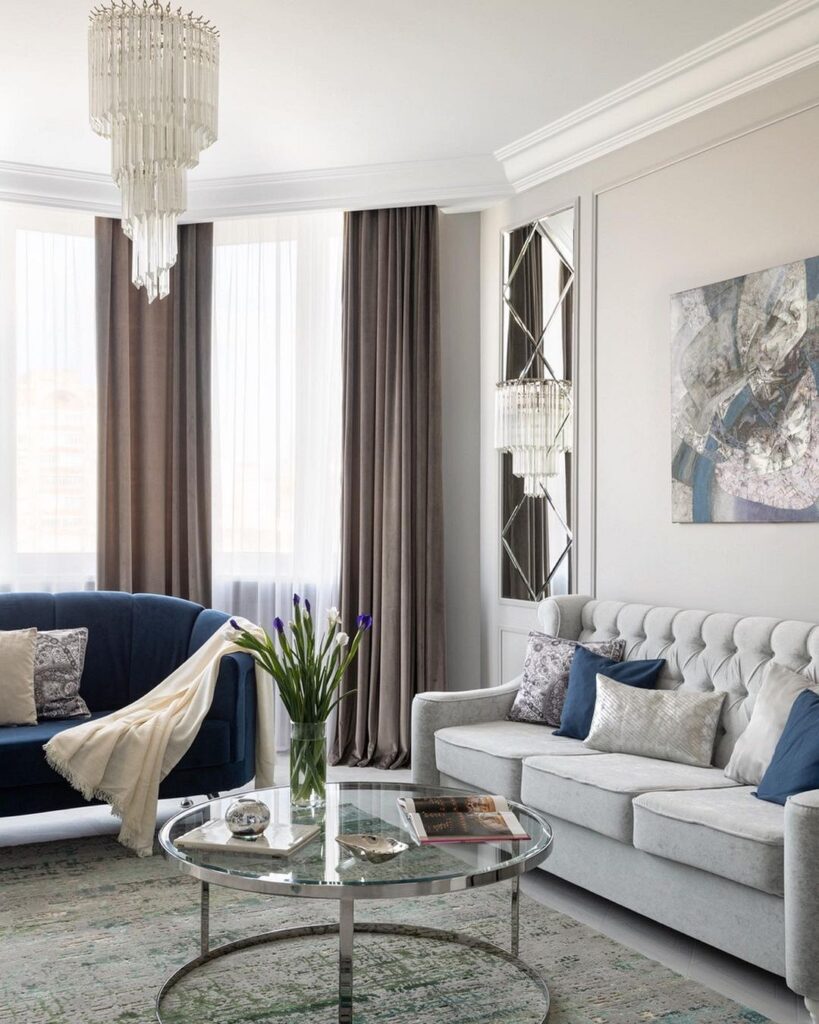
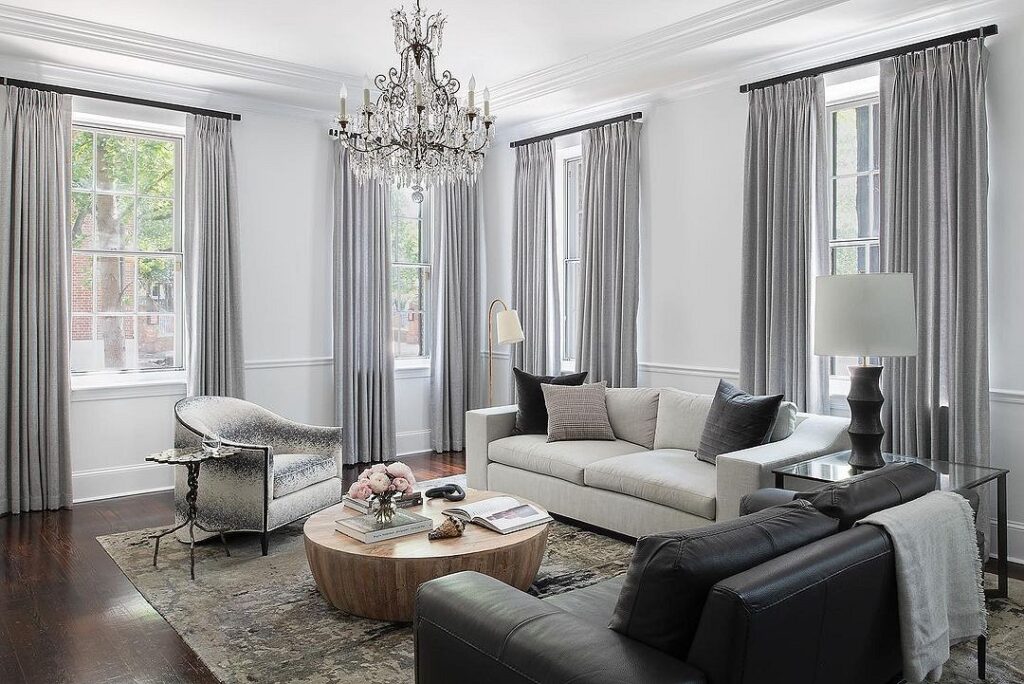
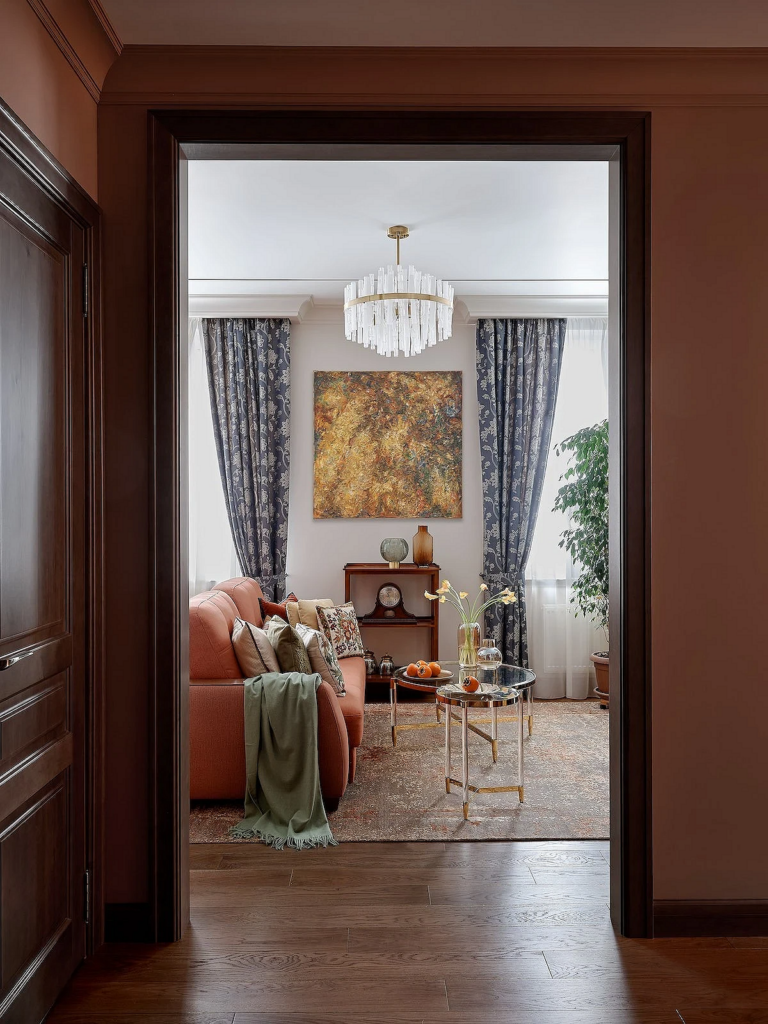
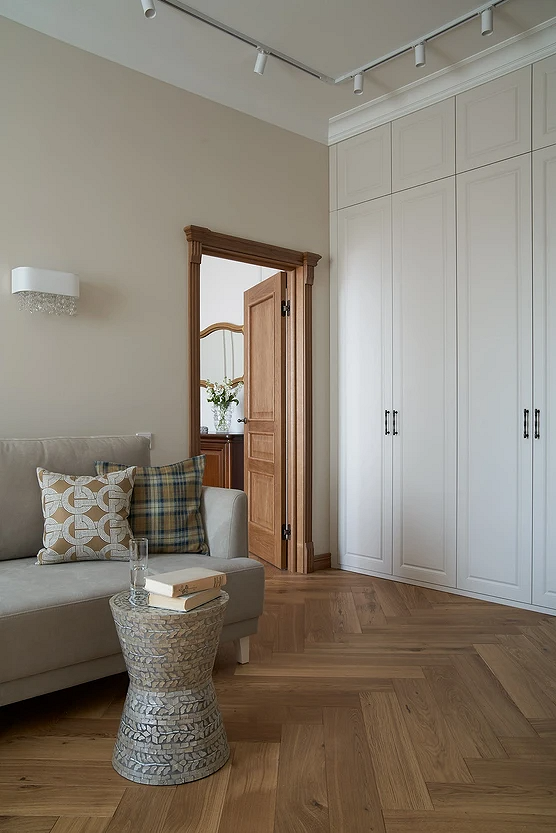
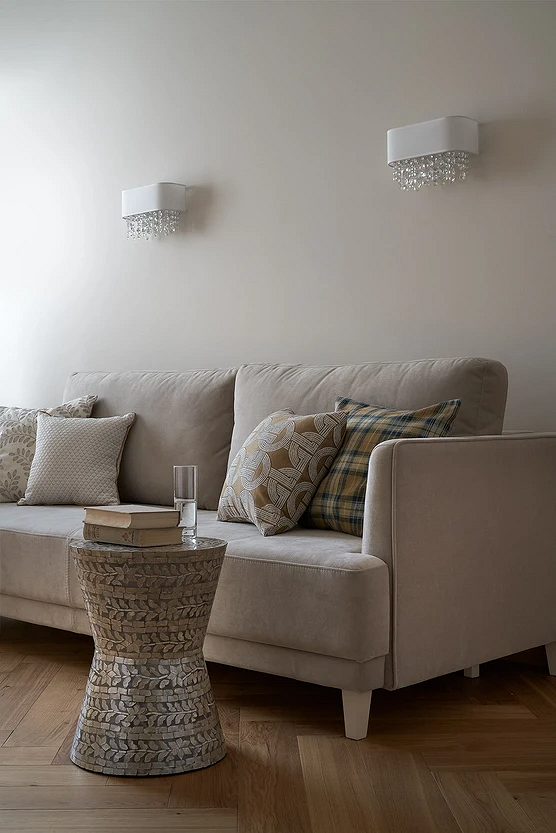
Decor
Living rooms in classic-style homes are always adorned with art objects, depending on the owners’ preferences.
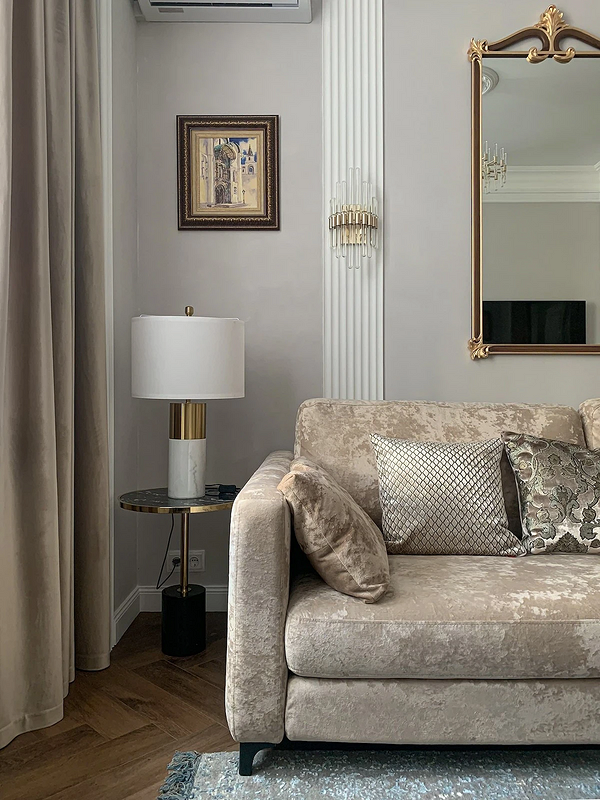
In such designs, reproductions and paintings are popular, but not everyone likes them. They can be replaced with porcelain or plaster figurines, metal figures, and unusual artifacts made of semi-precious stones. More utilitarian artistic objects are also in demand: beautiful dishes (usually kept behind glass in a cabinet), vases, antique clocks, mirrors in gilded frames, and candle holders. Again, the rule is: the more spacious the room, the more such items you can place in it.
In smaller homes, it’s better to reduce the number of decorative items and replace them with moldings – which can decorate not only the cornice or walls but also the chandelier attachment point, doorways, fireplace portals, etc.
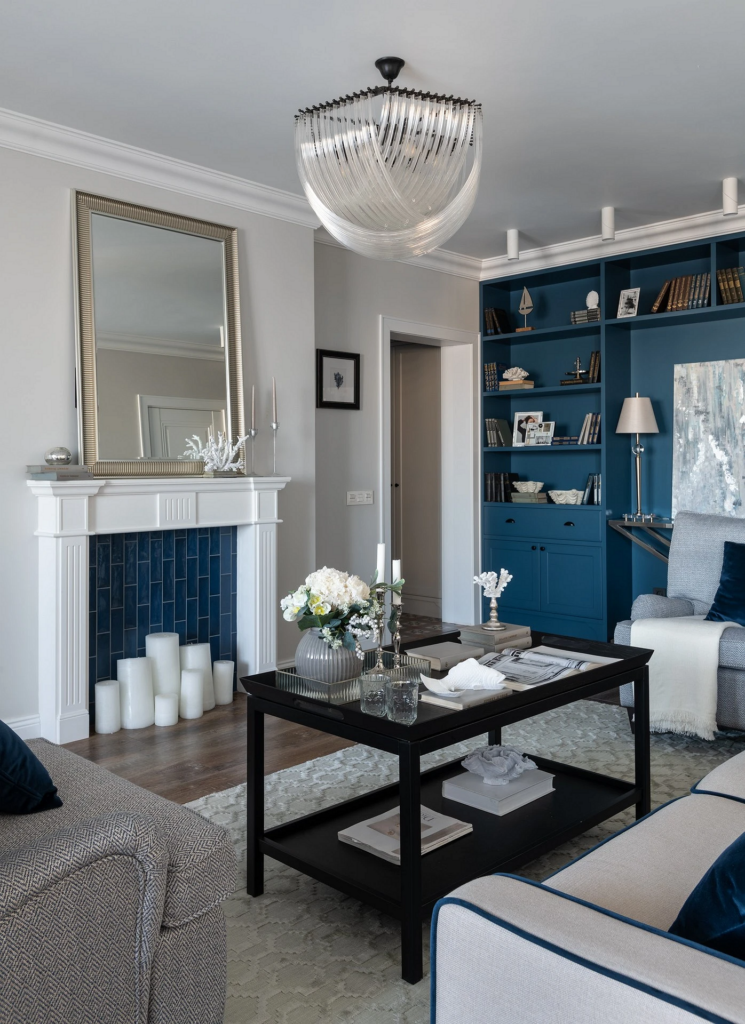
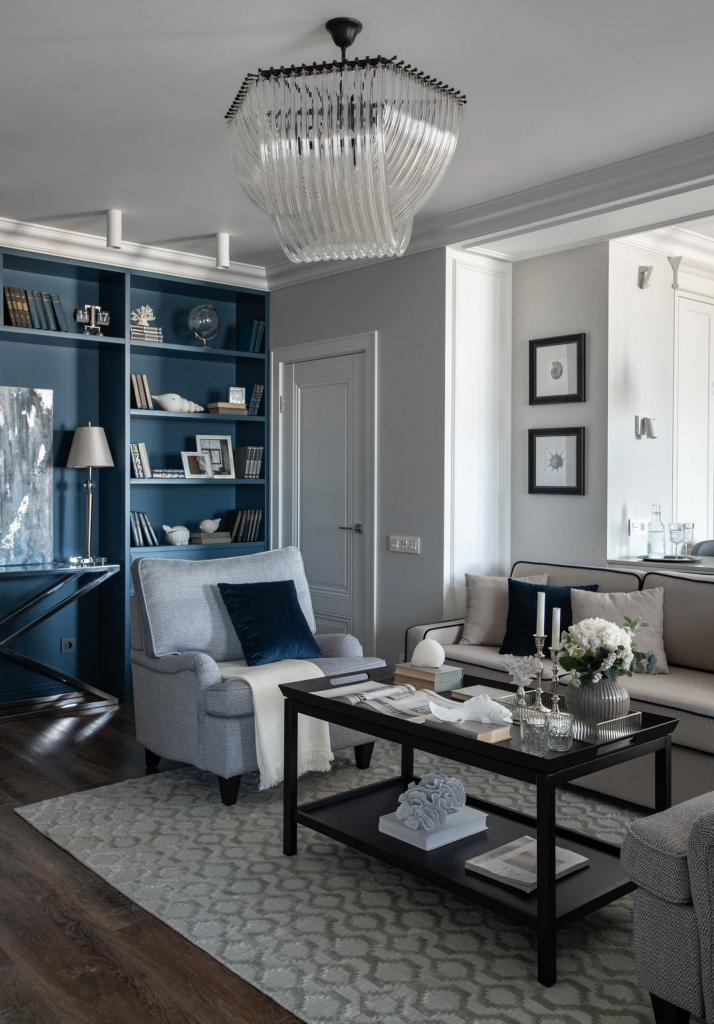
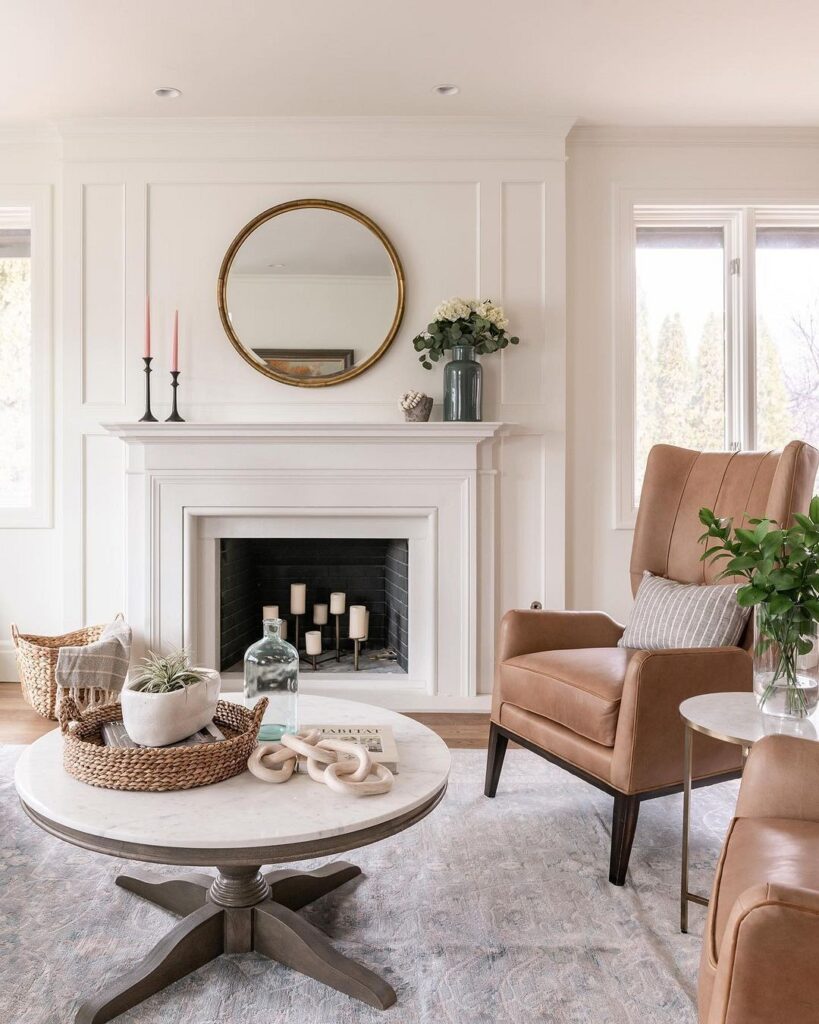
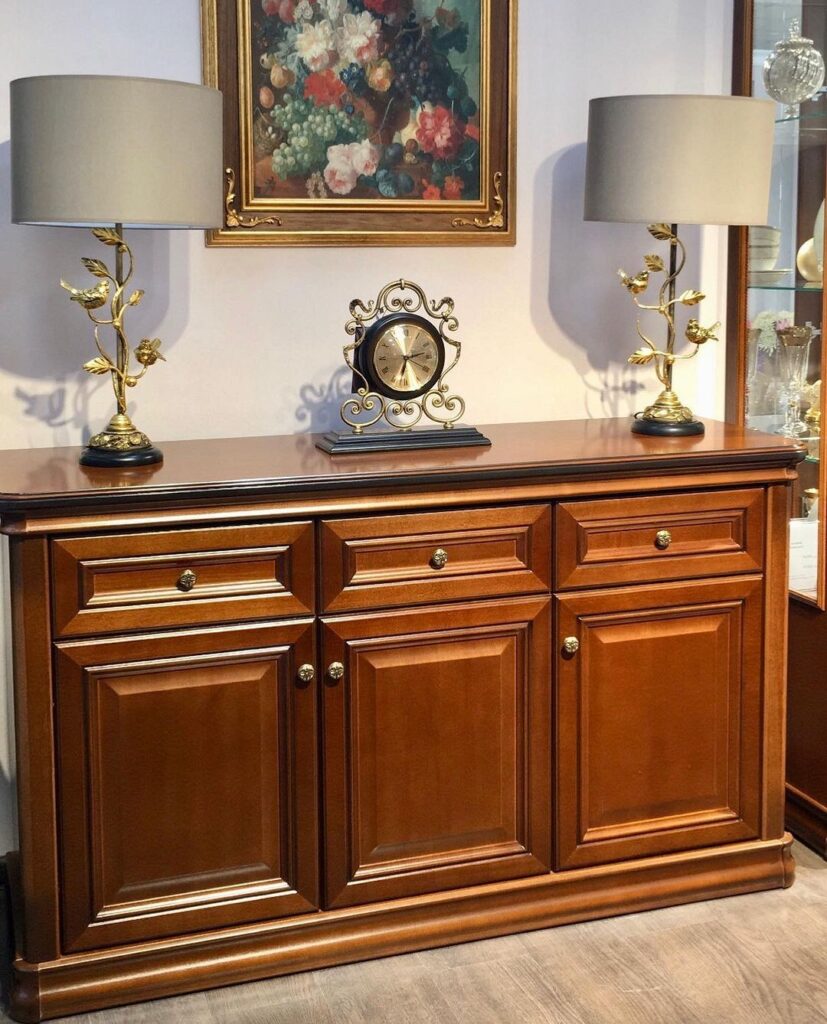

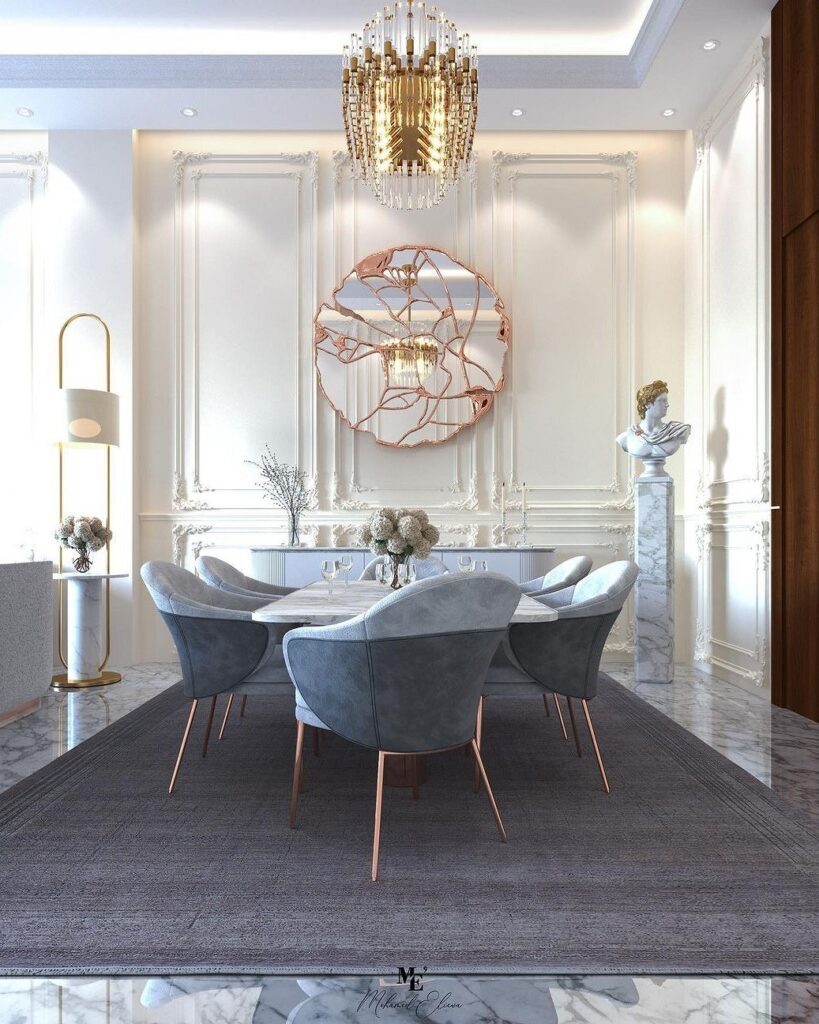
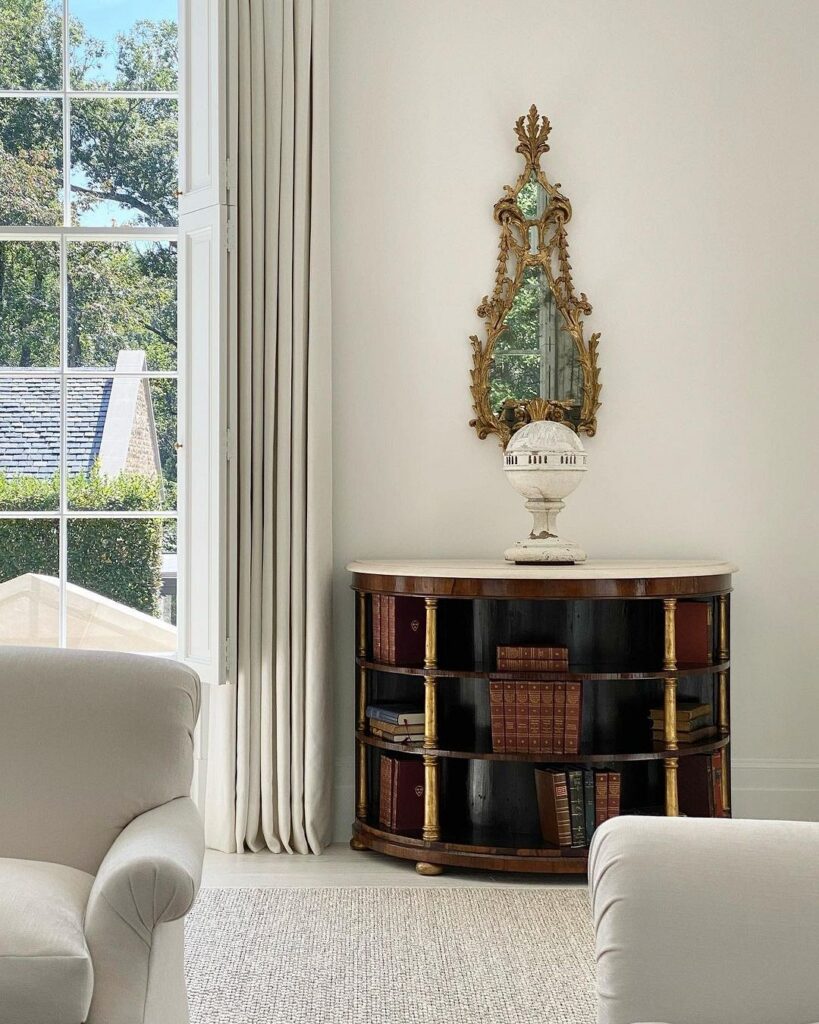
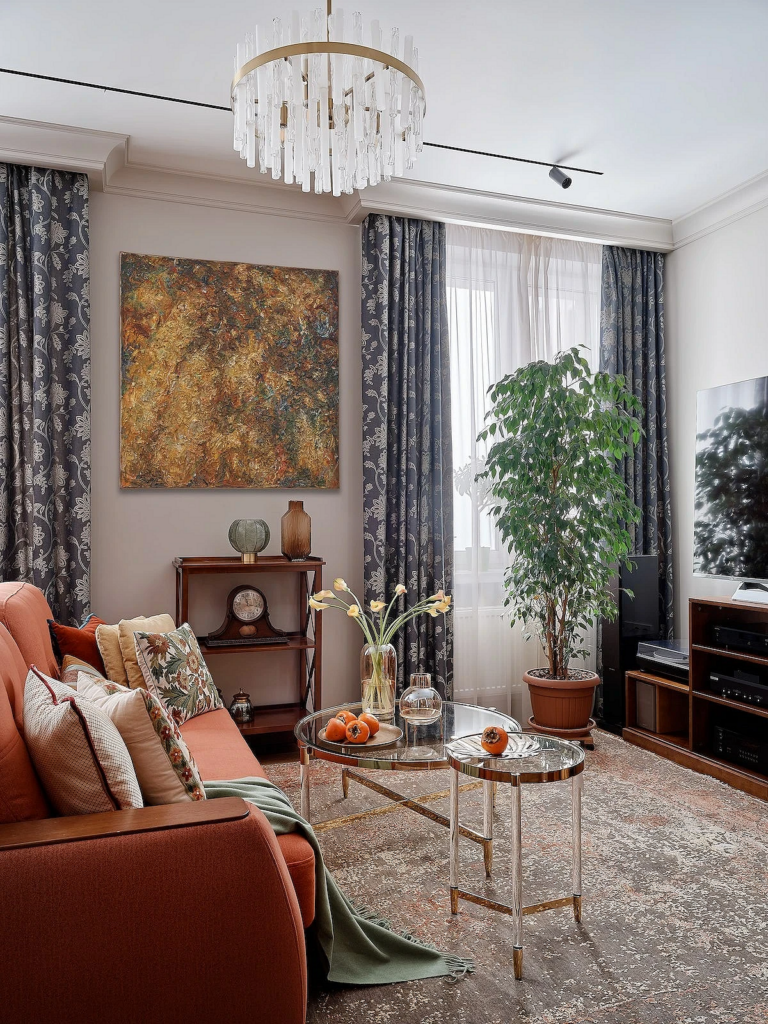
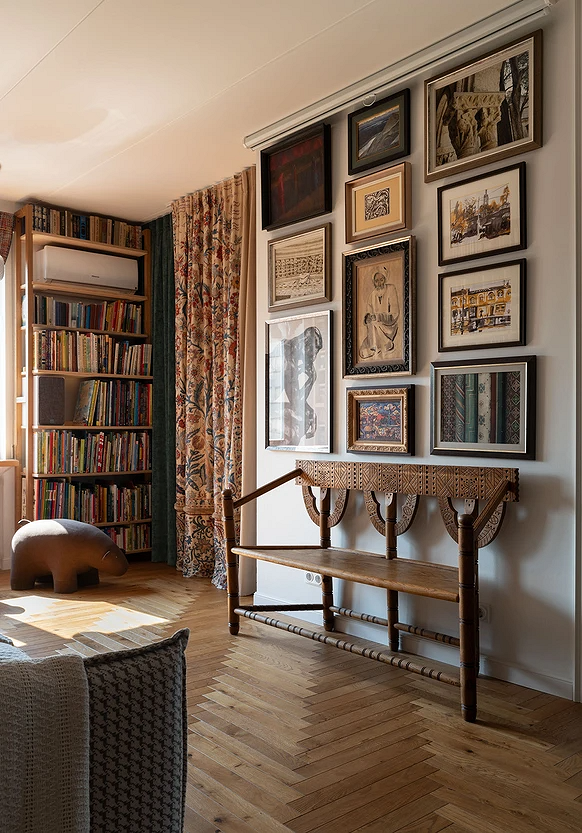
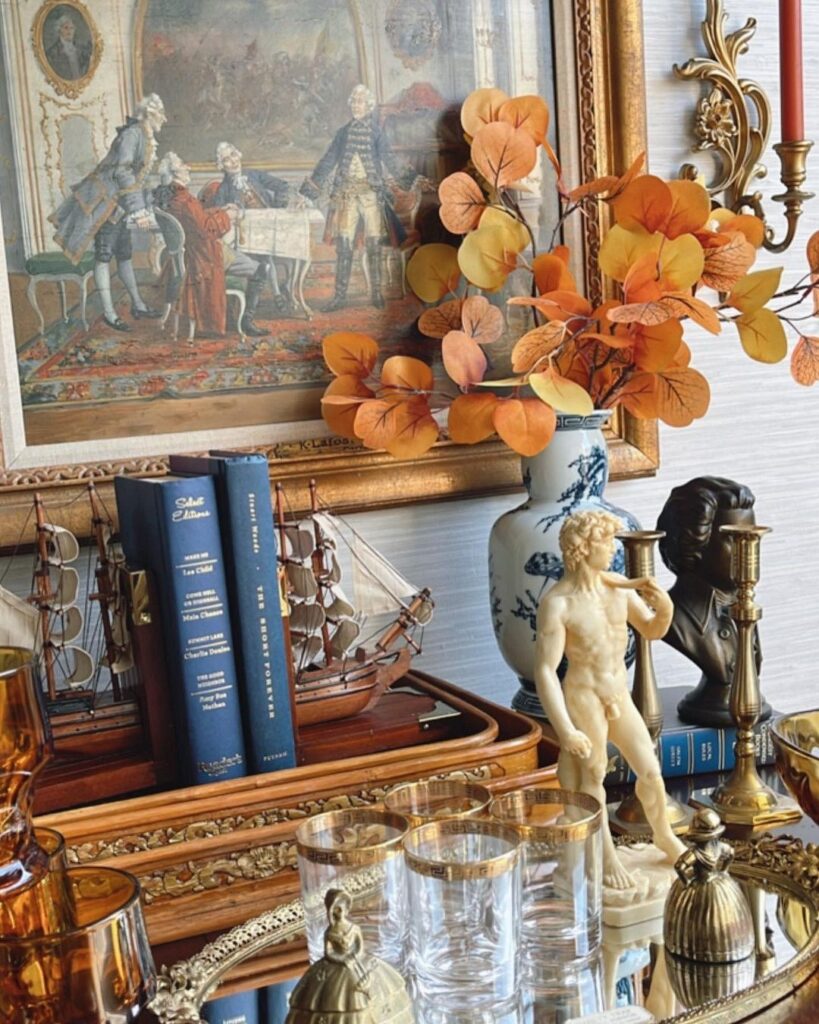

Lighting
Lighting includes a central hanging chandelier and additional light sources placed around the perimeter of the room.
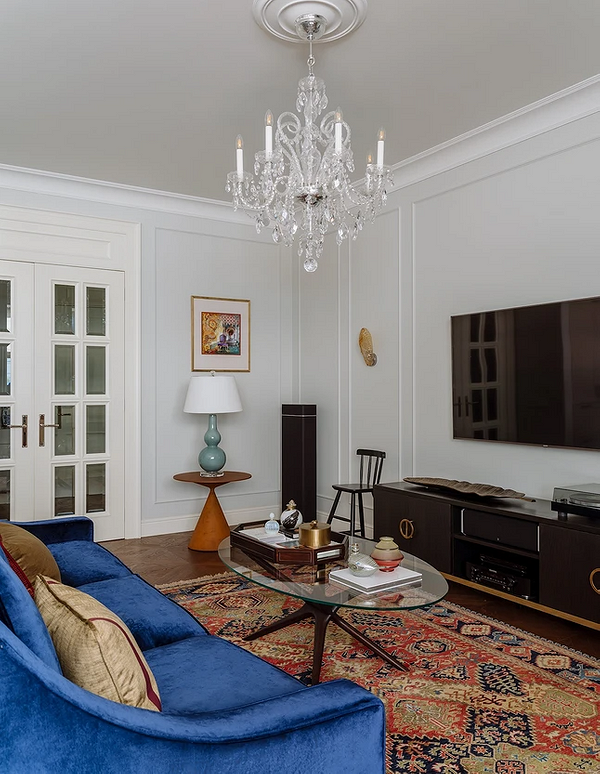
Floor lamps, wall sconces, and table lamps are needed; the larger the room, the more there should be. Ideally, the chandelier should literally shine, an effect achieved with crystal pendants and Bohemian glass. However, this is only suitable for very high ceilings. If the room height is standard, consider more neutral models with a small number of horns (from 3 to 7) and compact traditional-shaped shades. Choose a frame in bronze or gilded, preferably with forged elements.
Supplementary lamps should match the interior’s tone. Lampshades are preferably made of matte glass or fabric – they partially transmit light and create a cozy atmosphere. Options decorated with crystals or gilding look impressive.
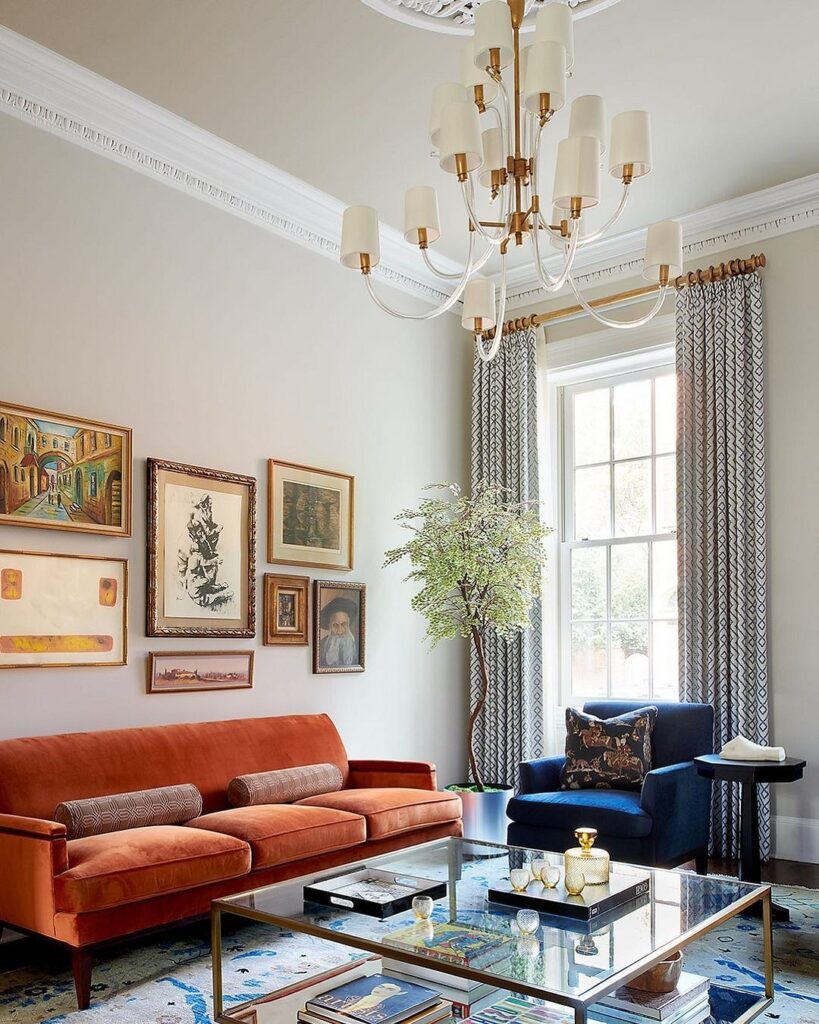

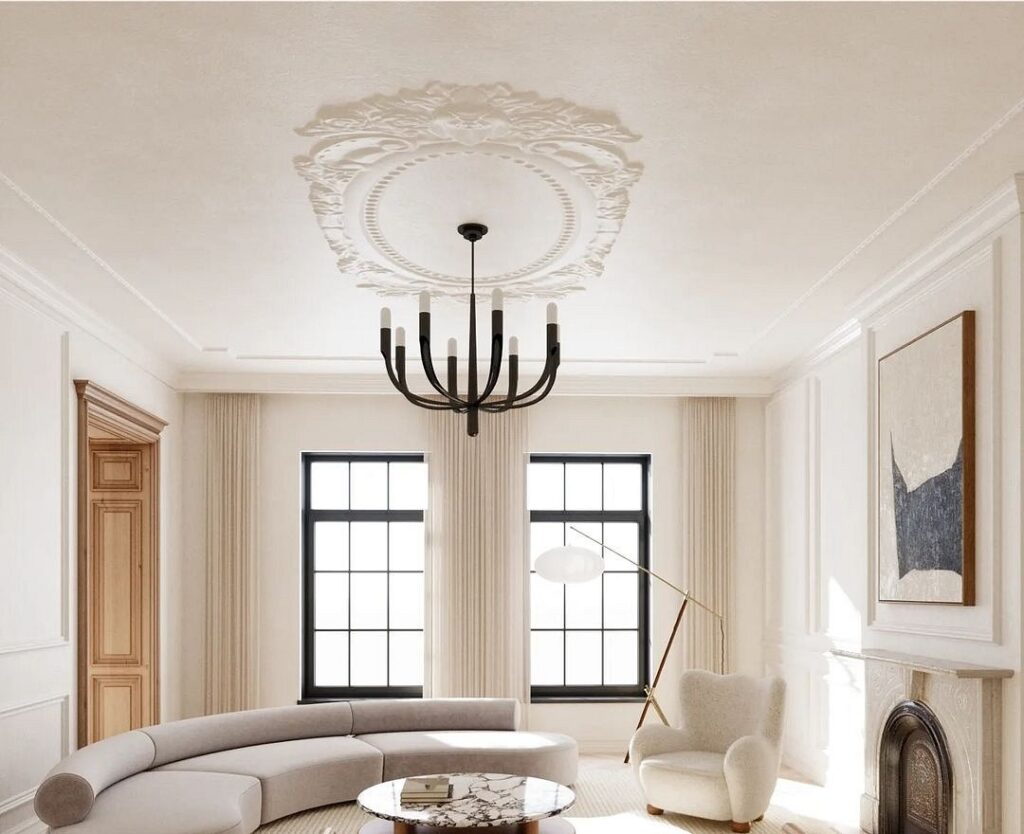
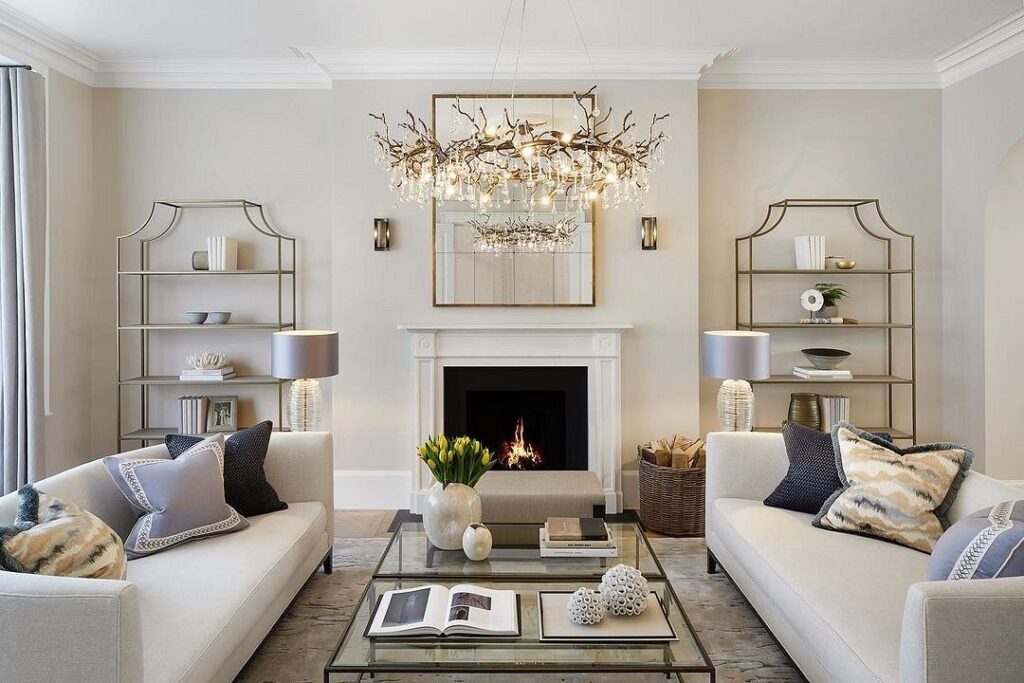
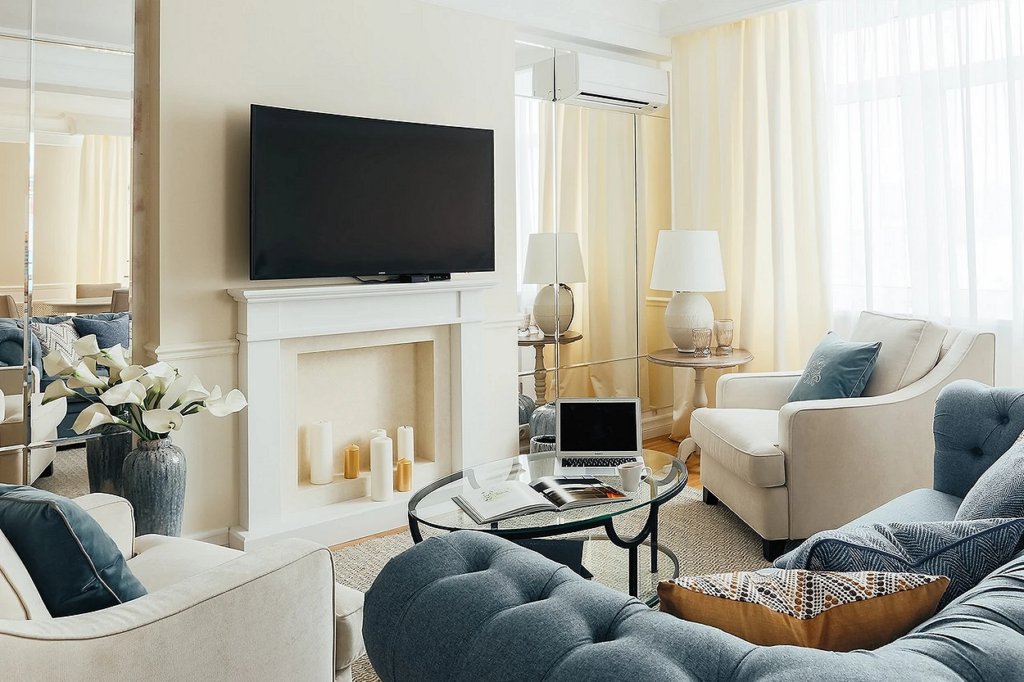
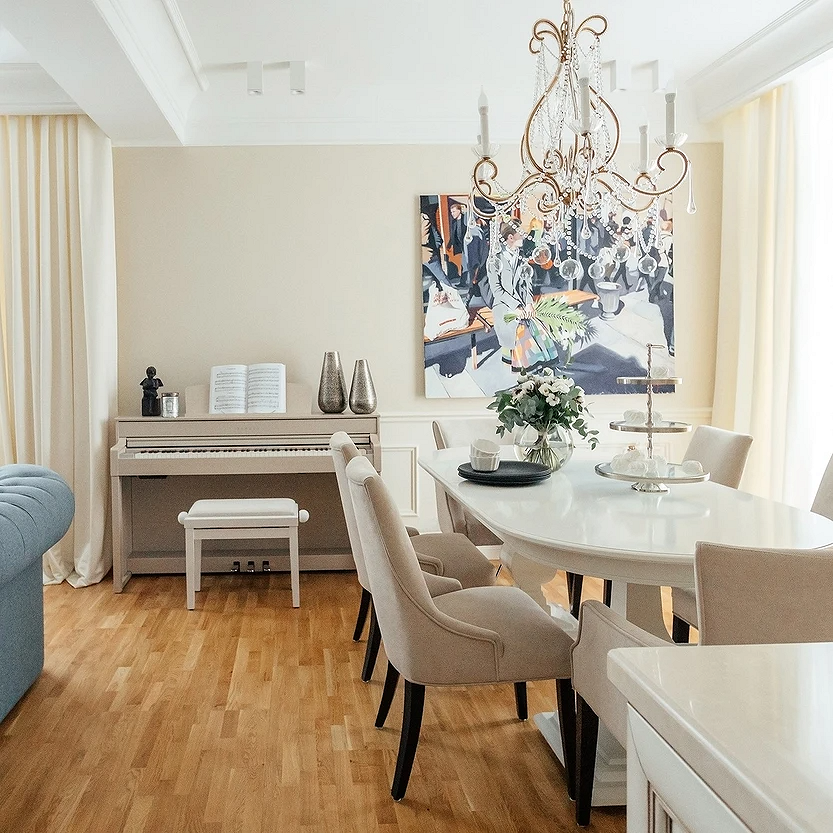
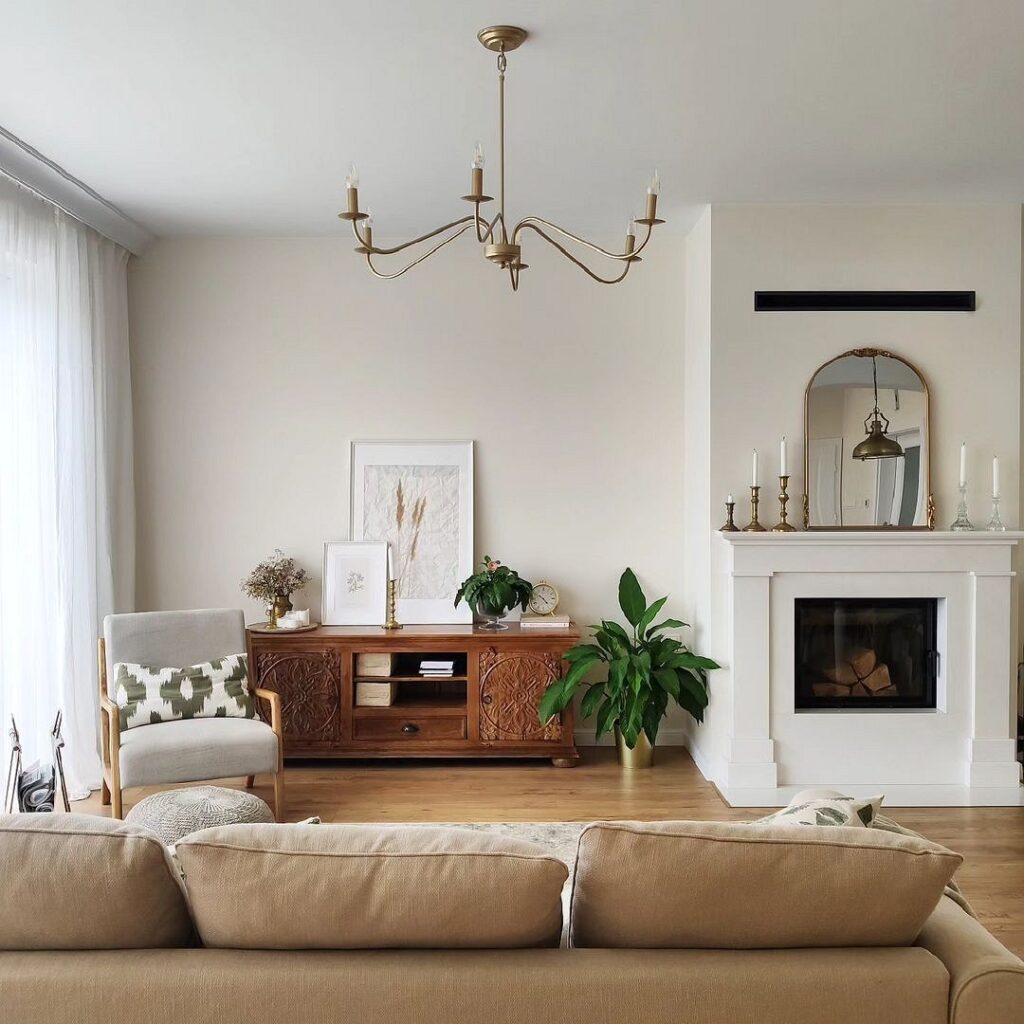
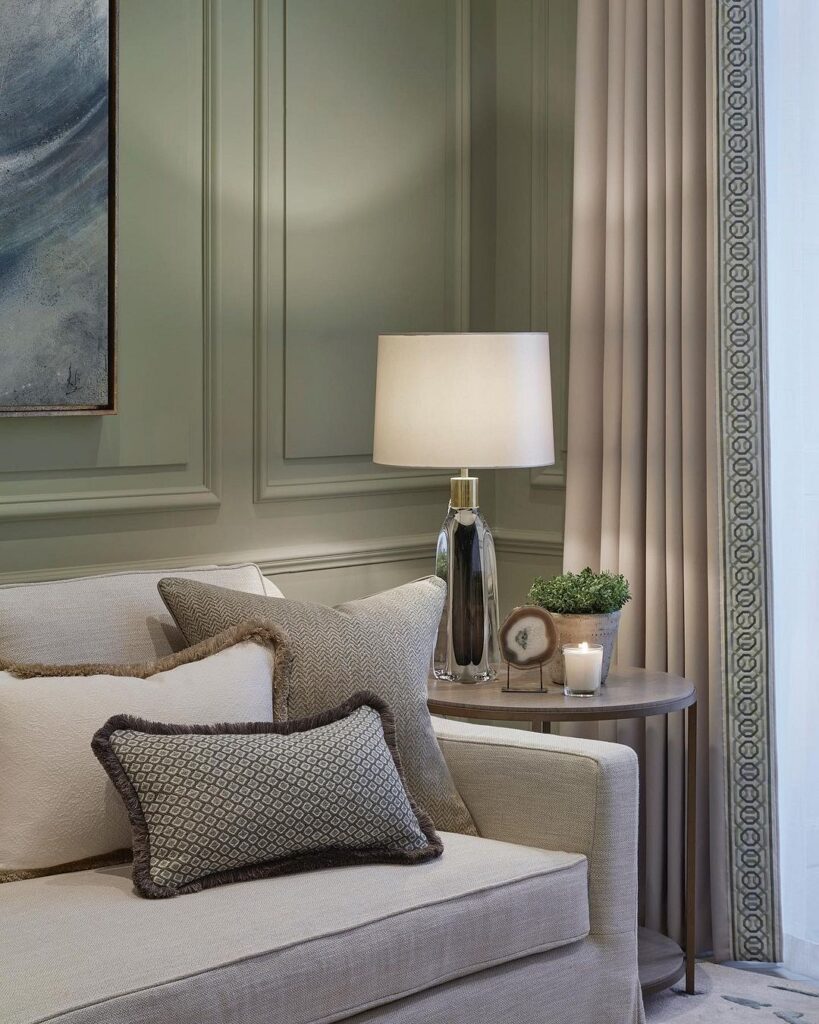
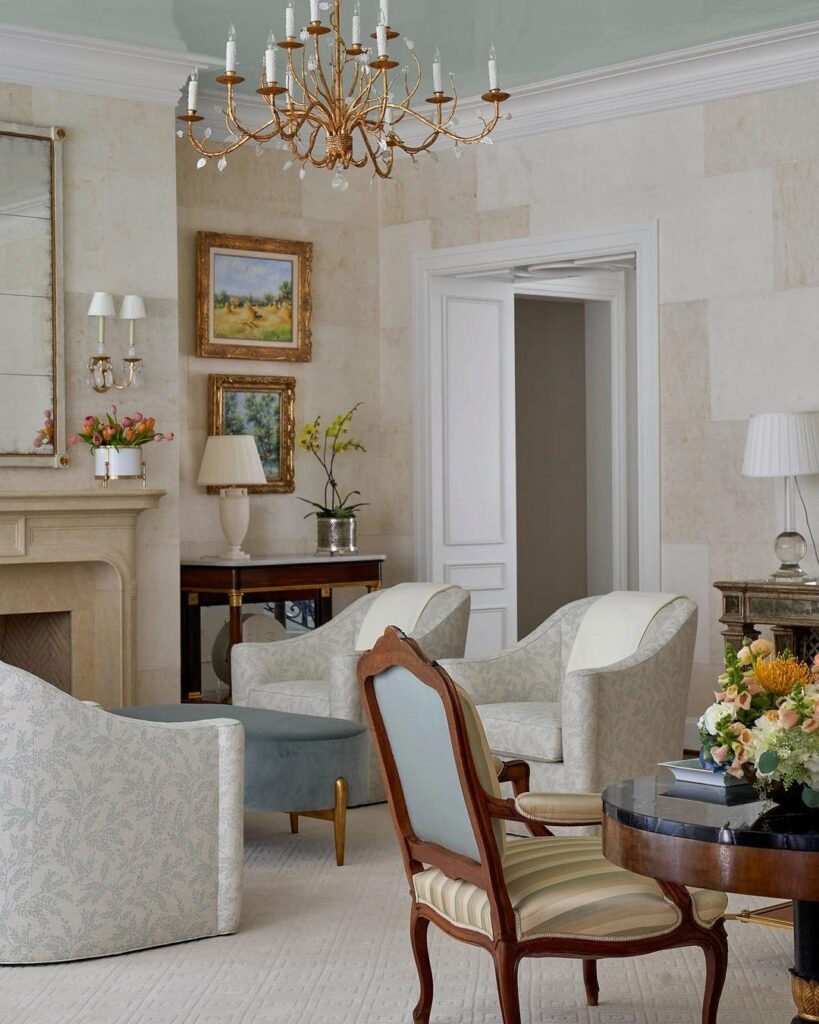
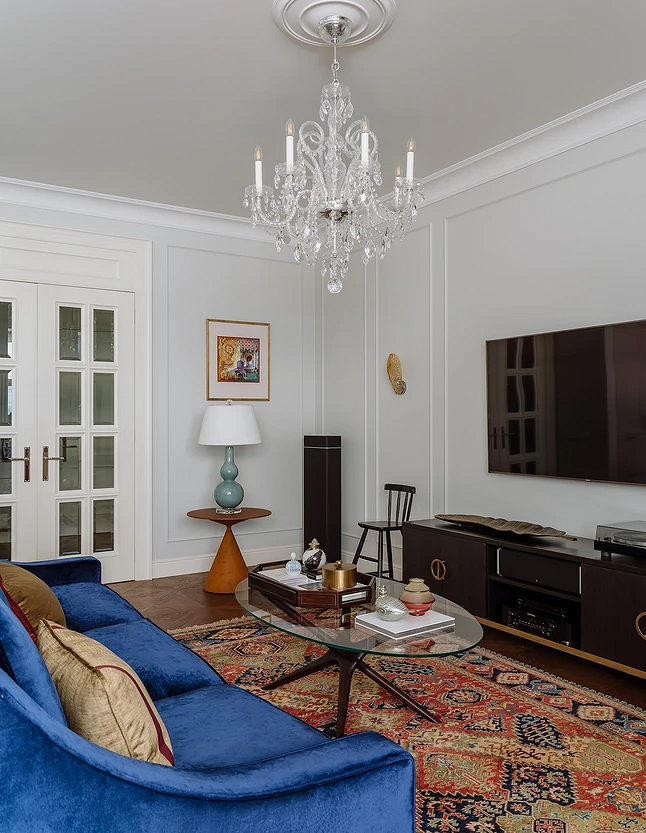
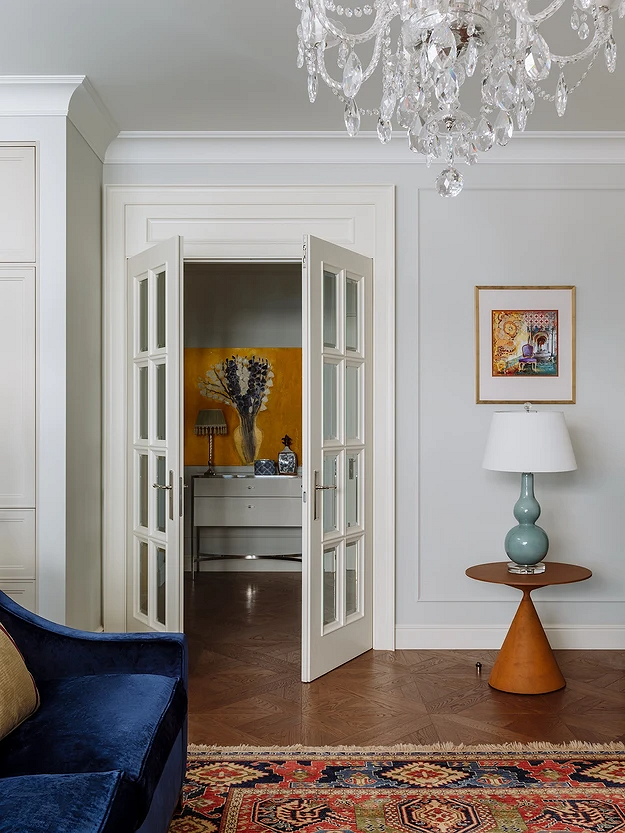
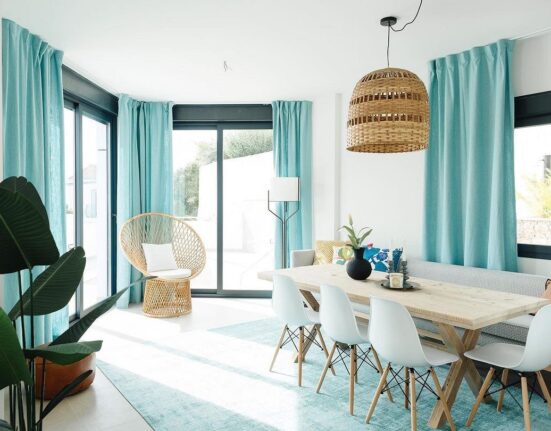


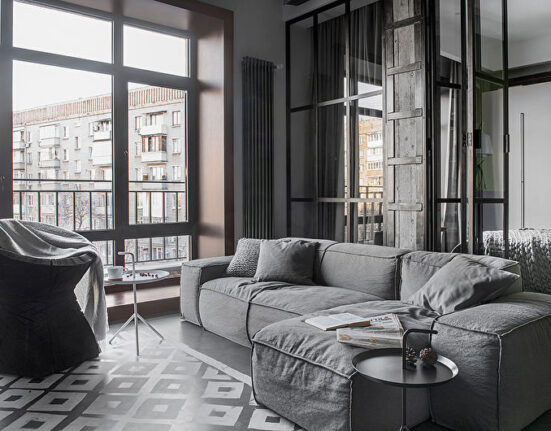
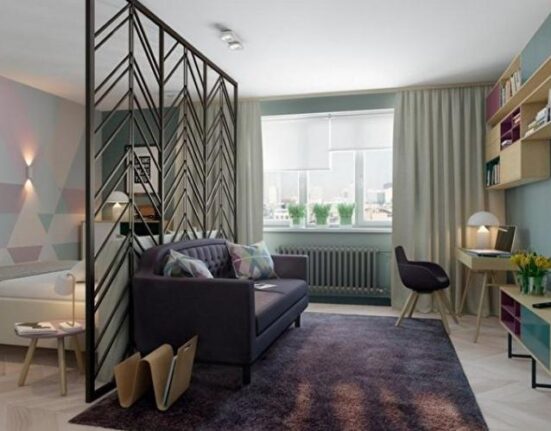
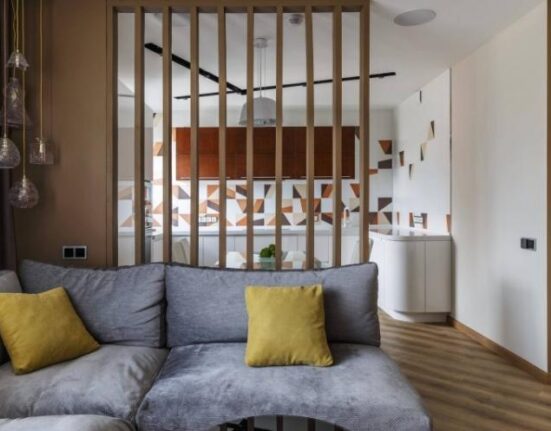
Leave feedback about this